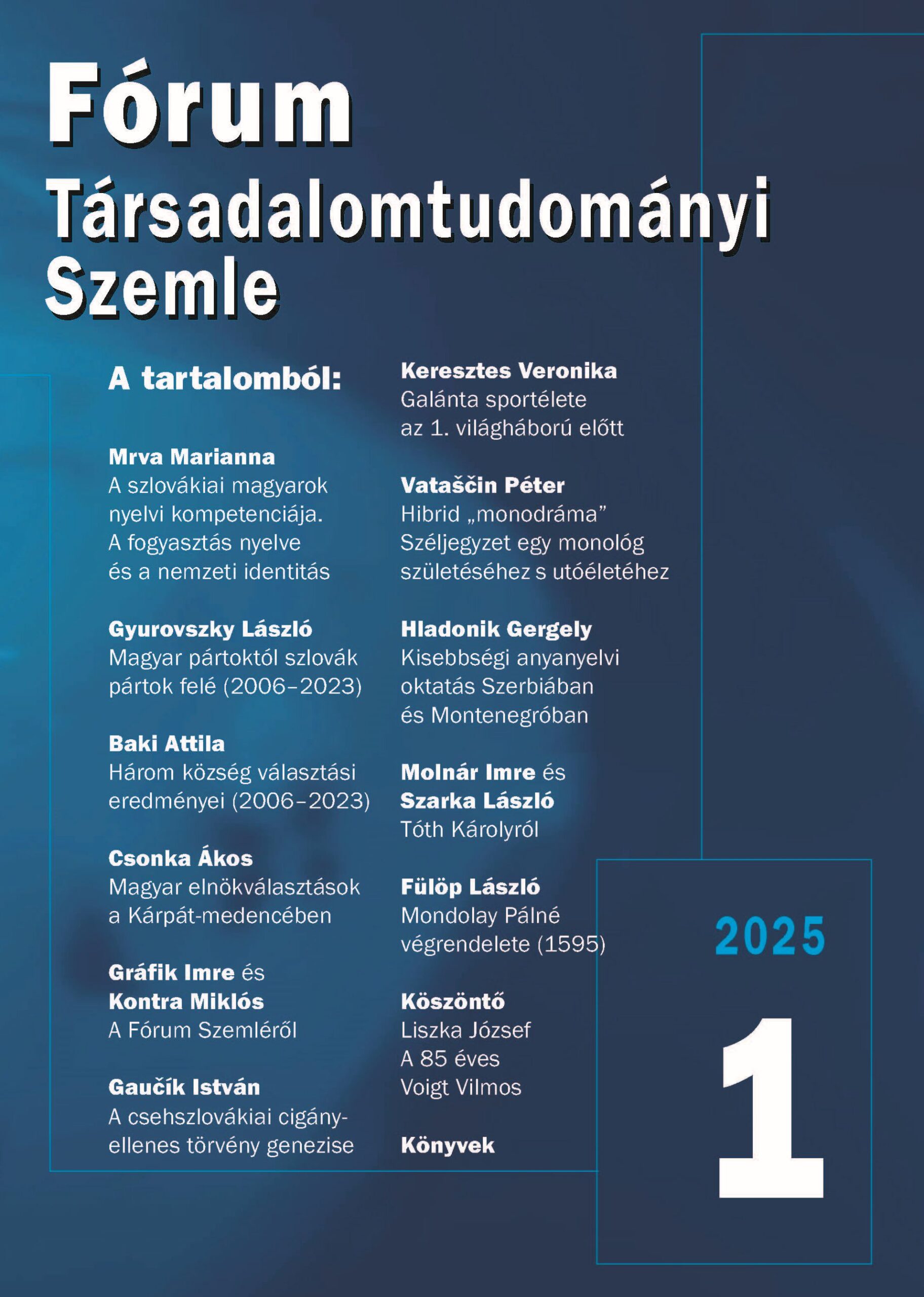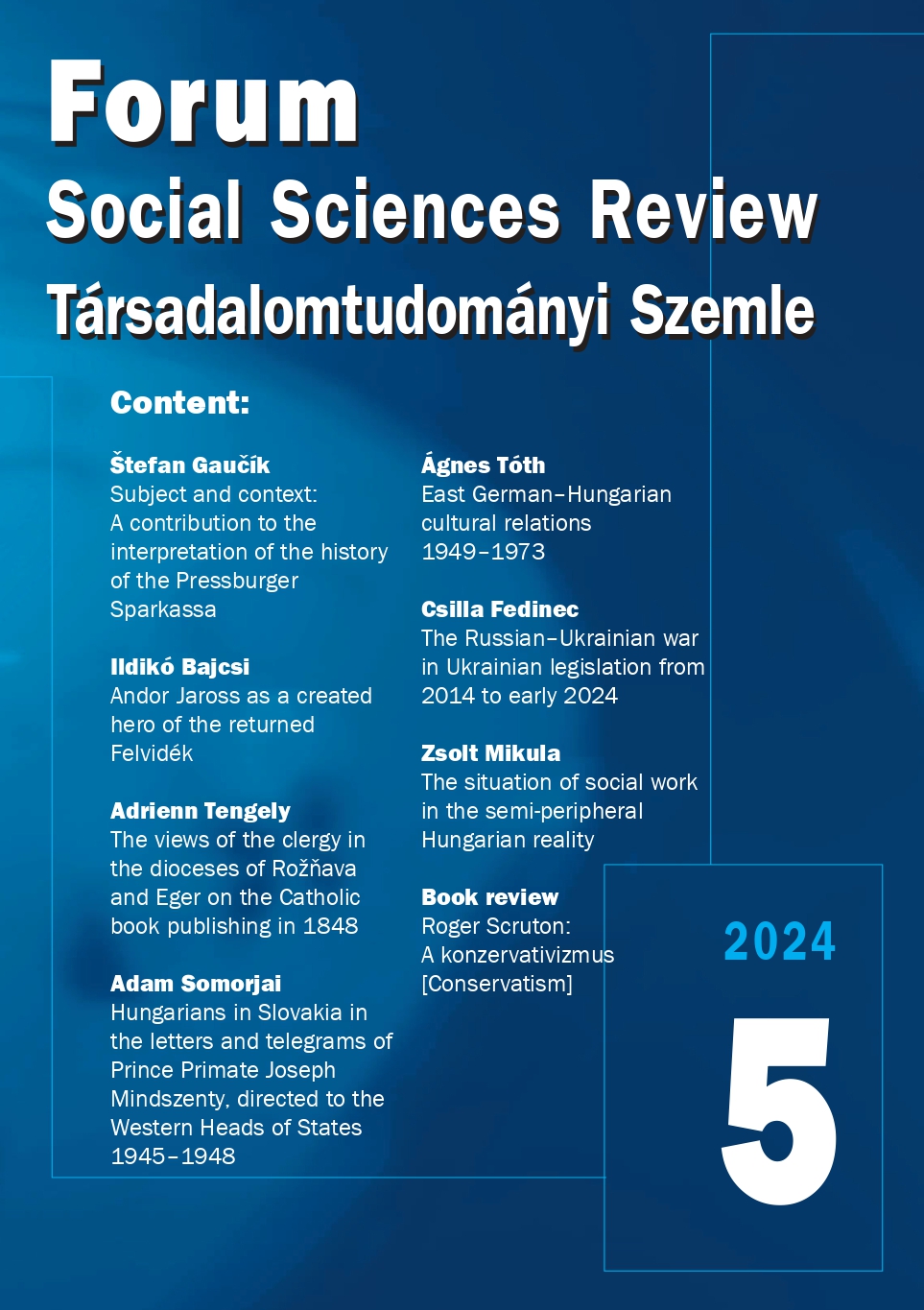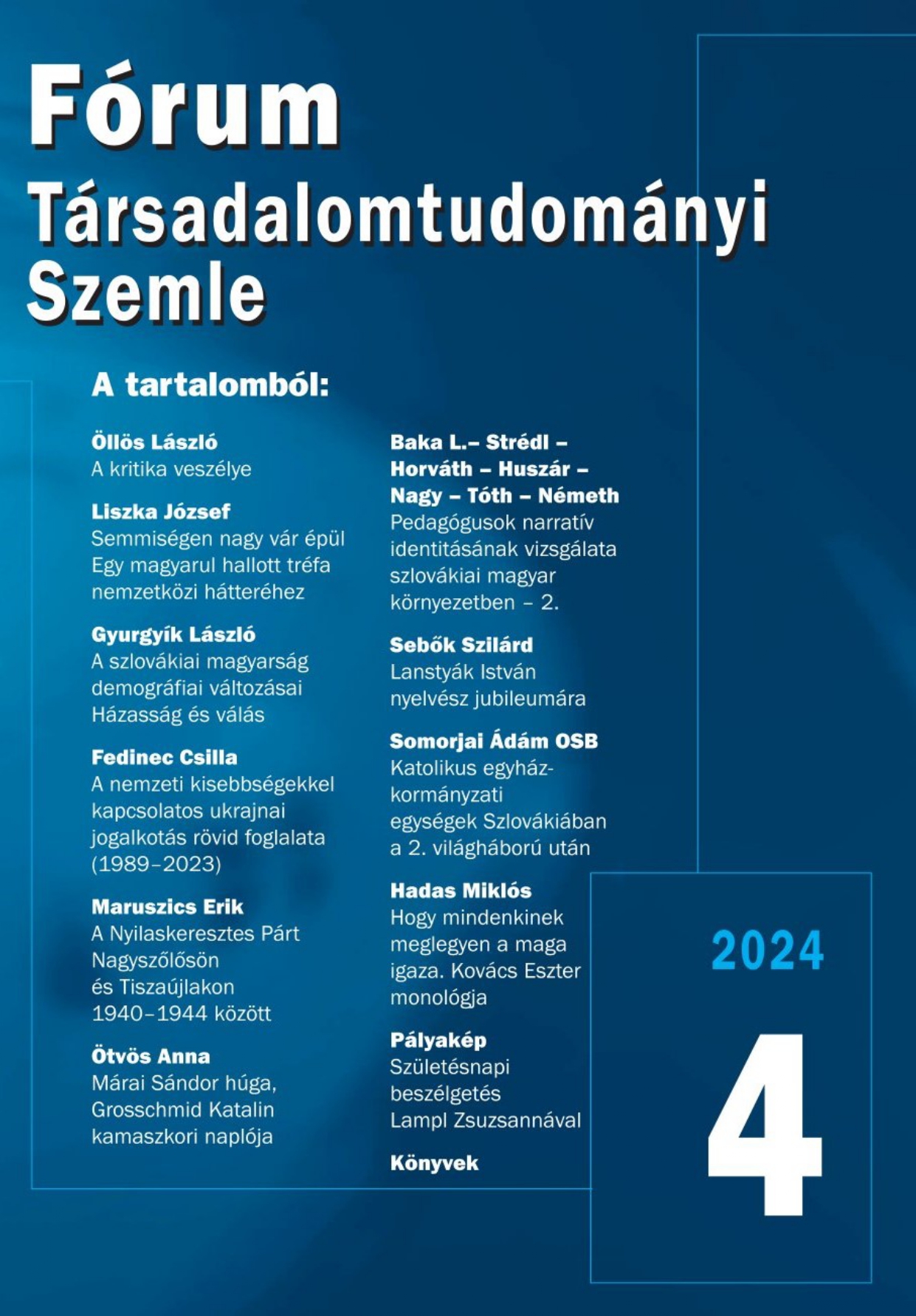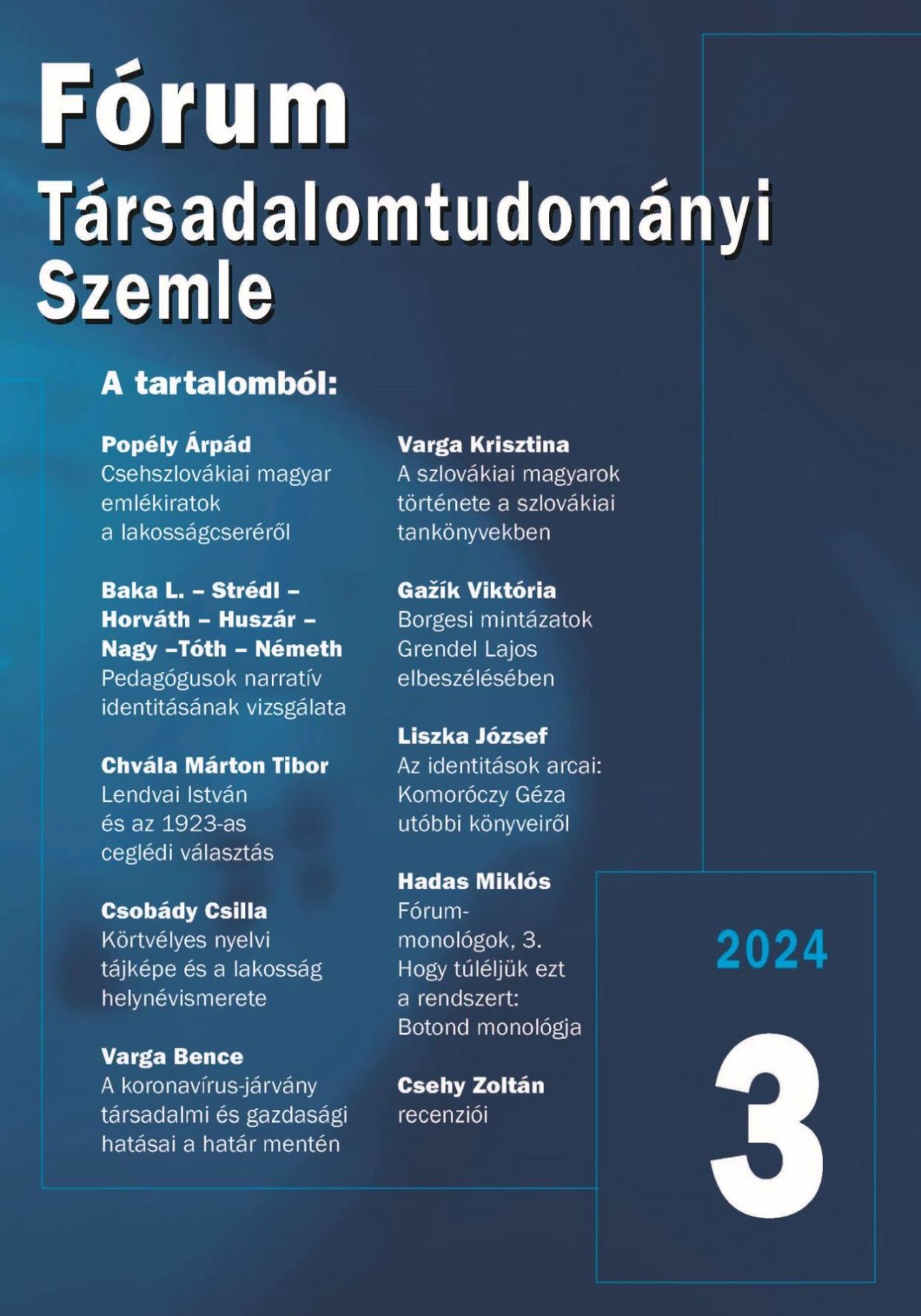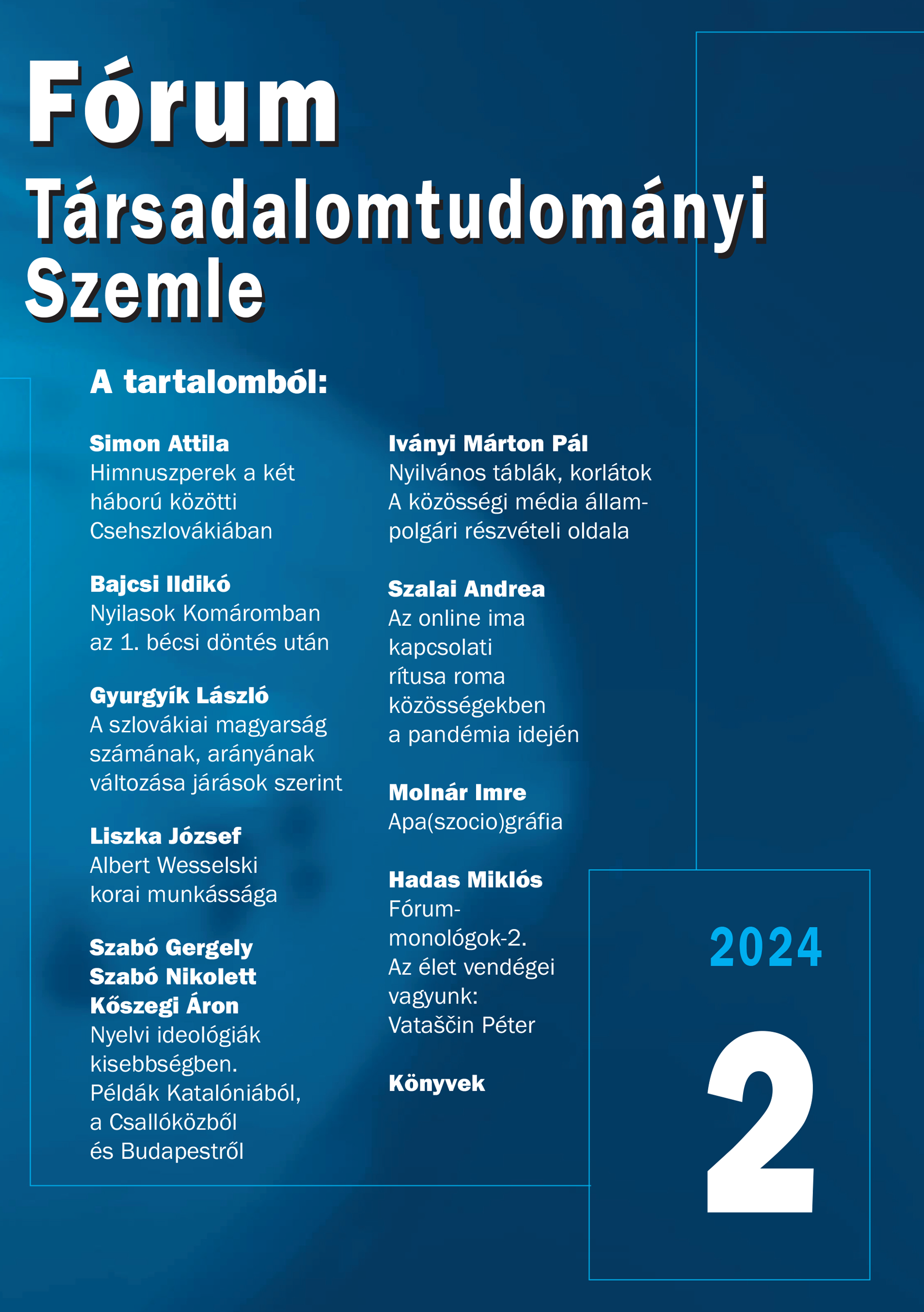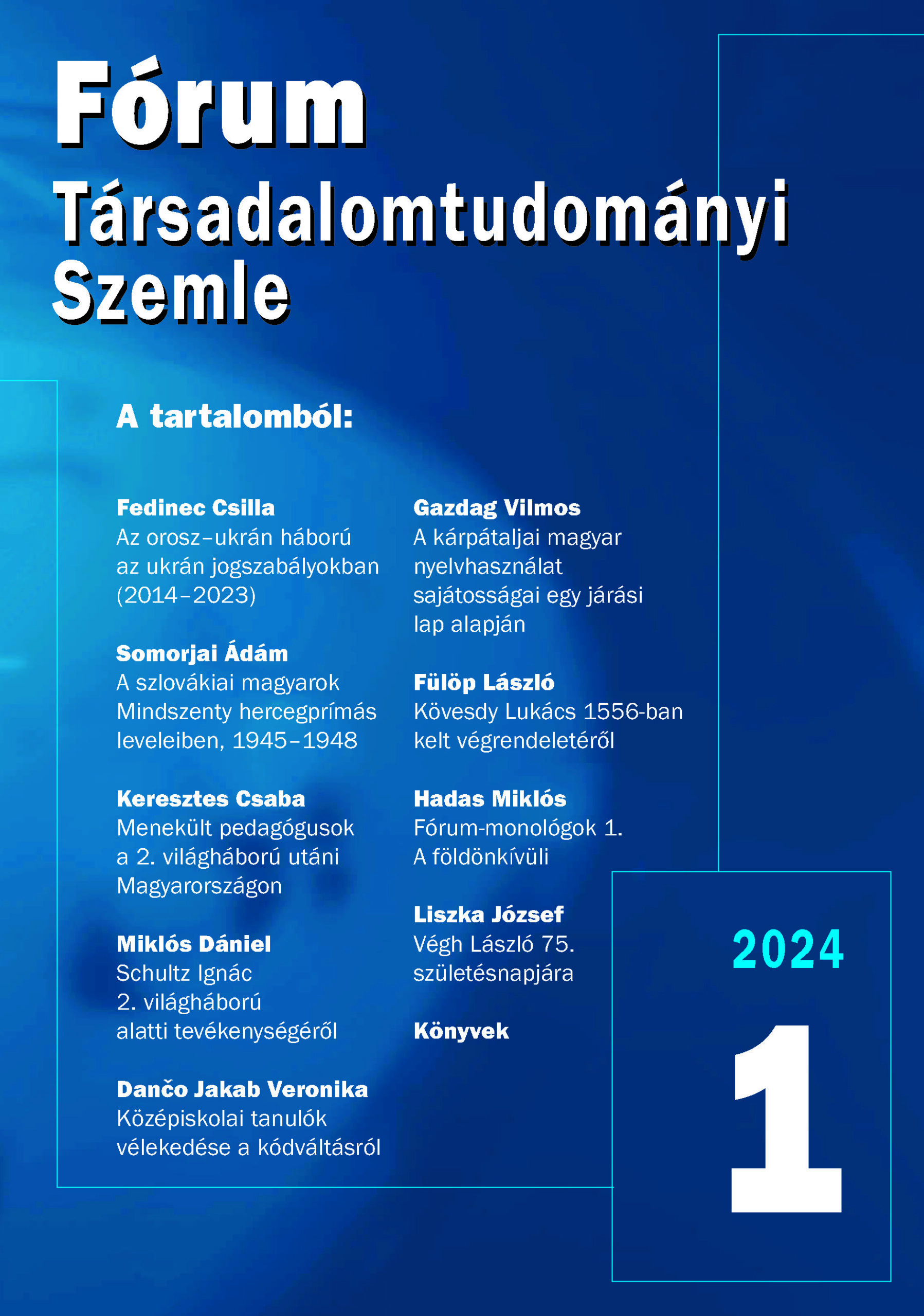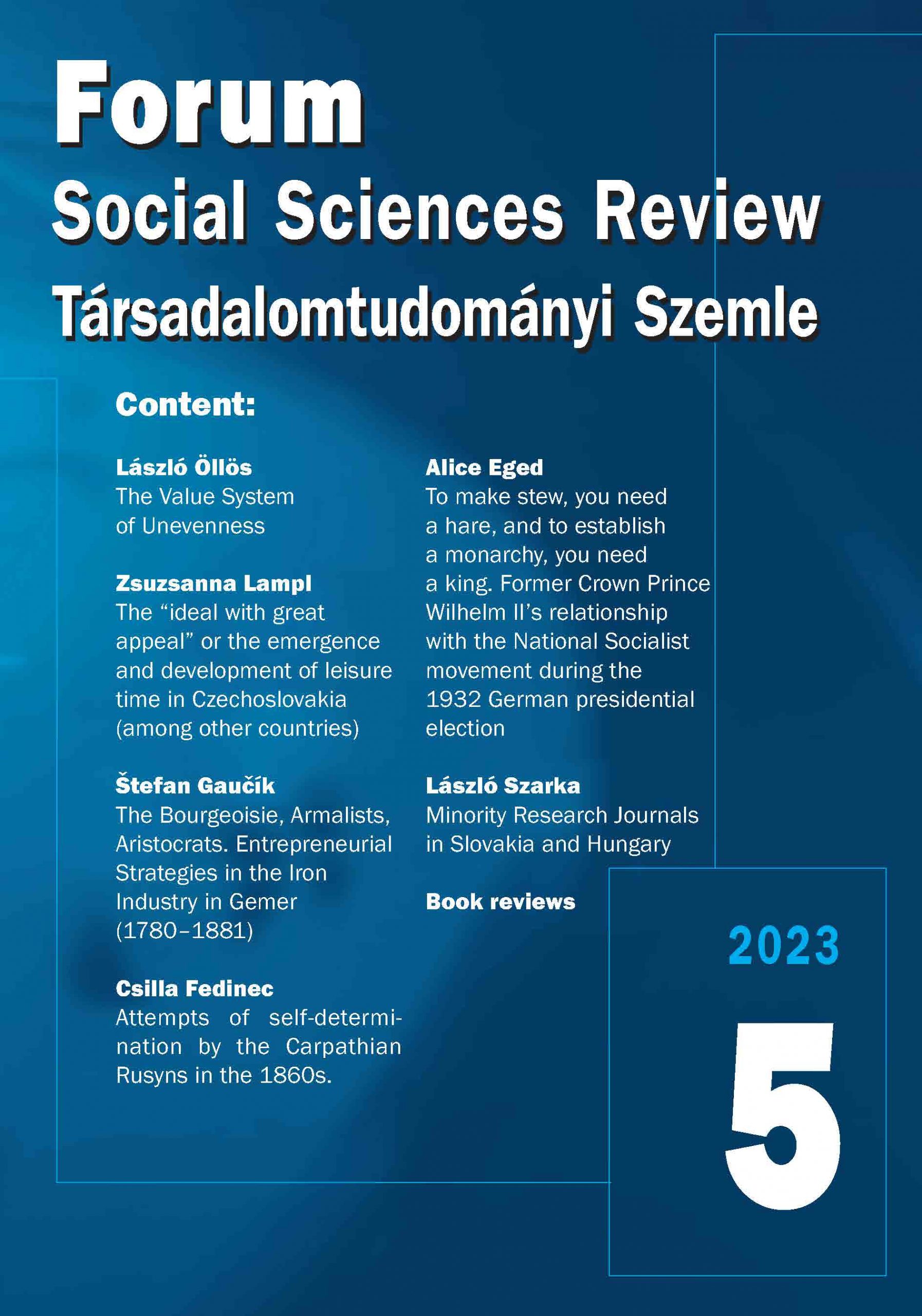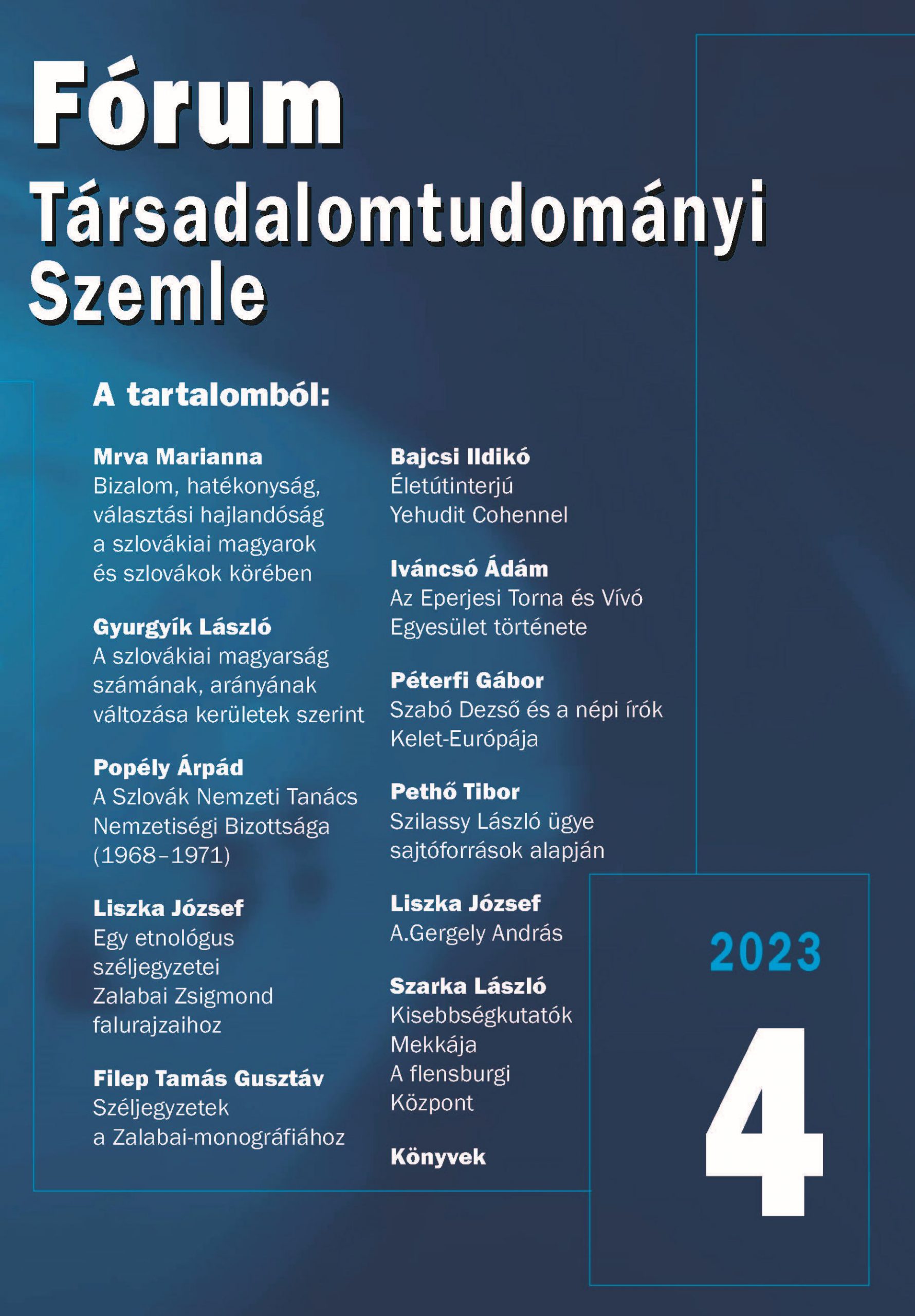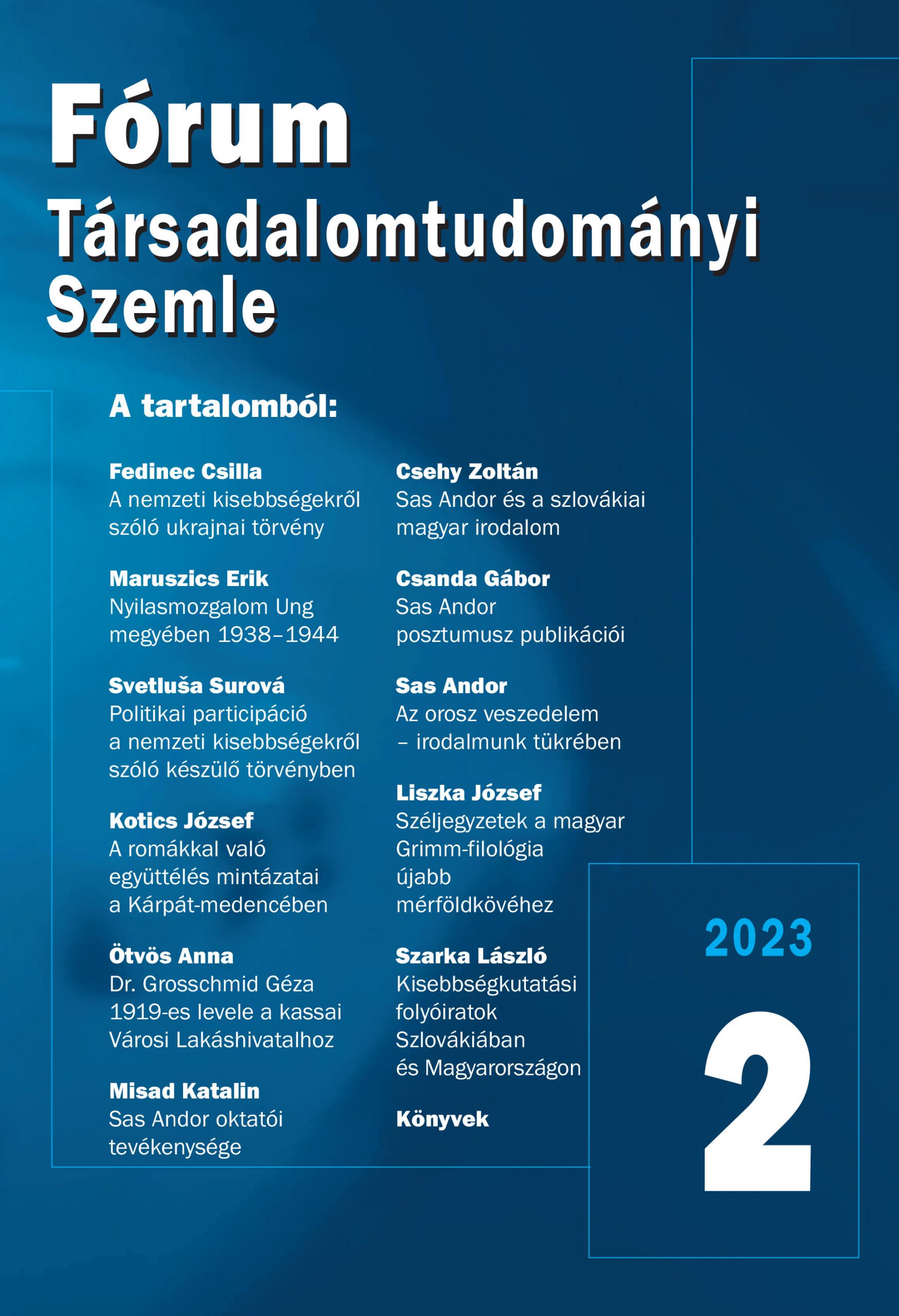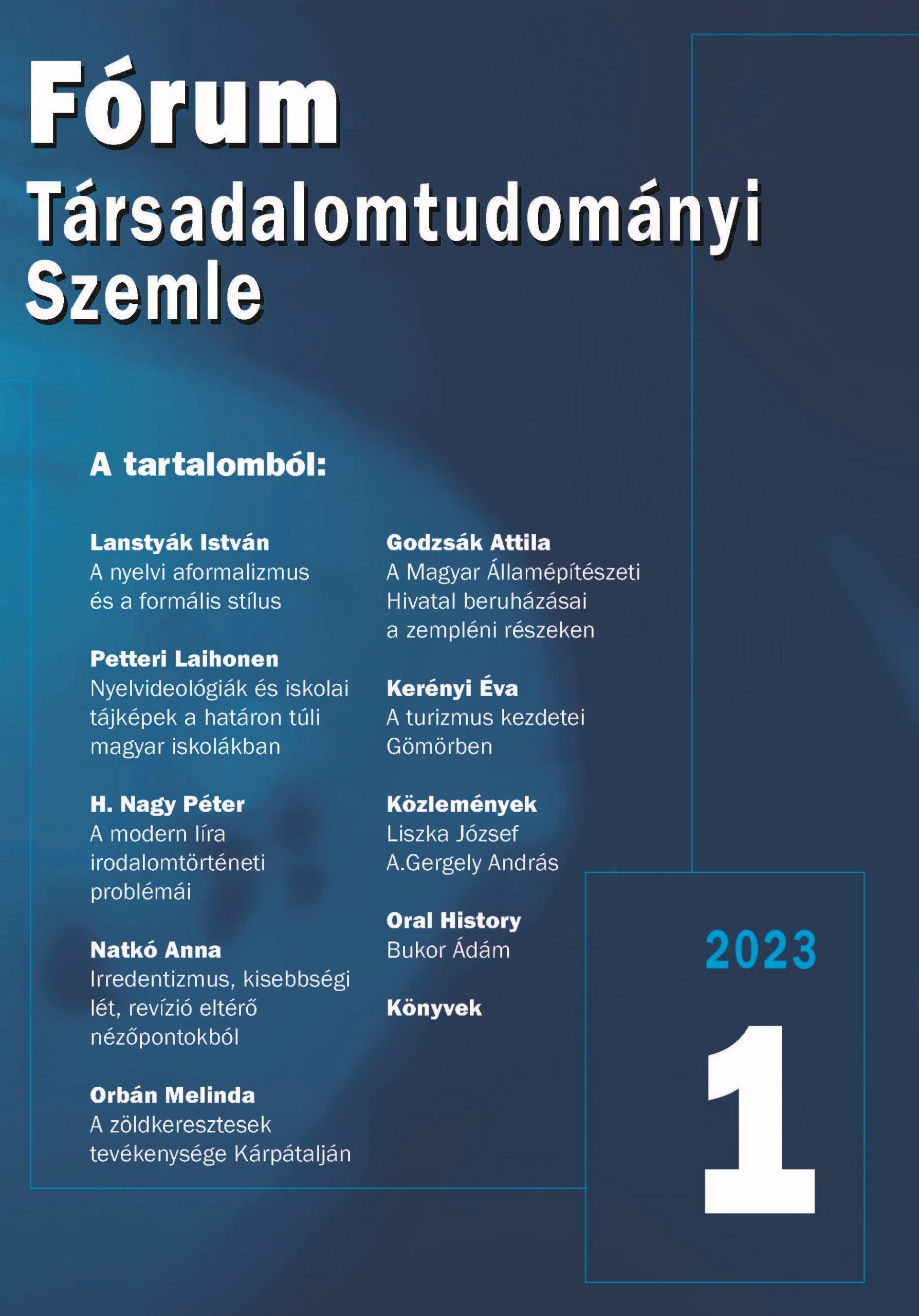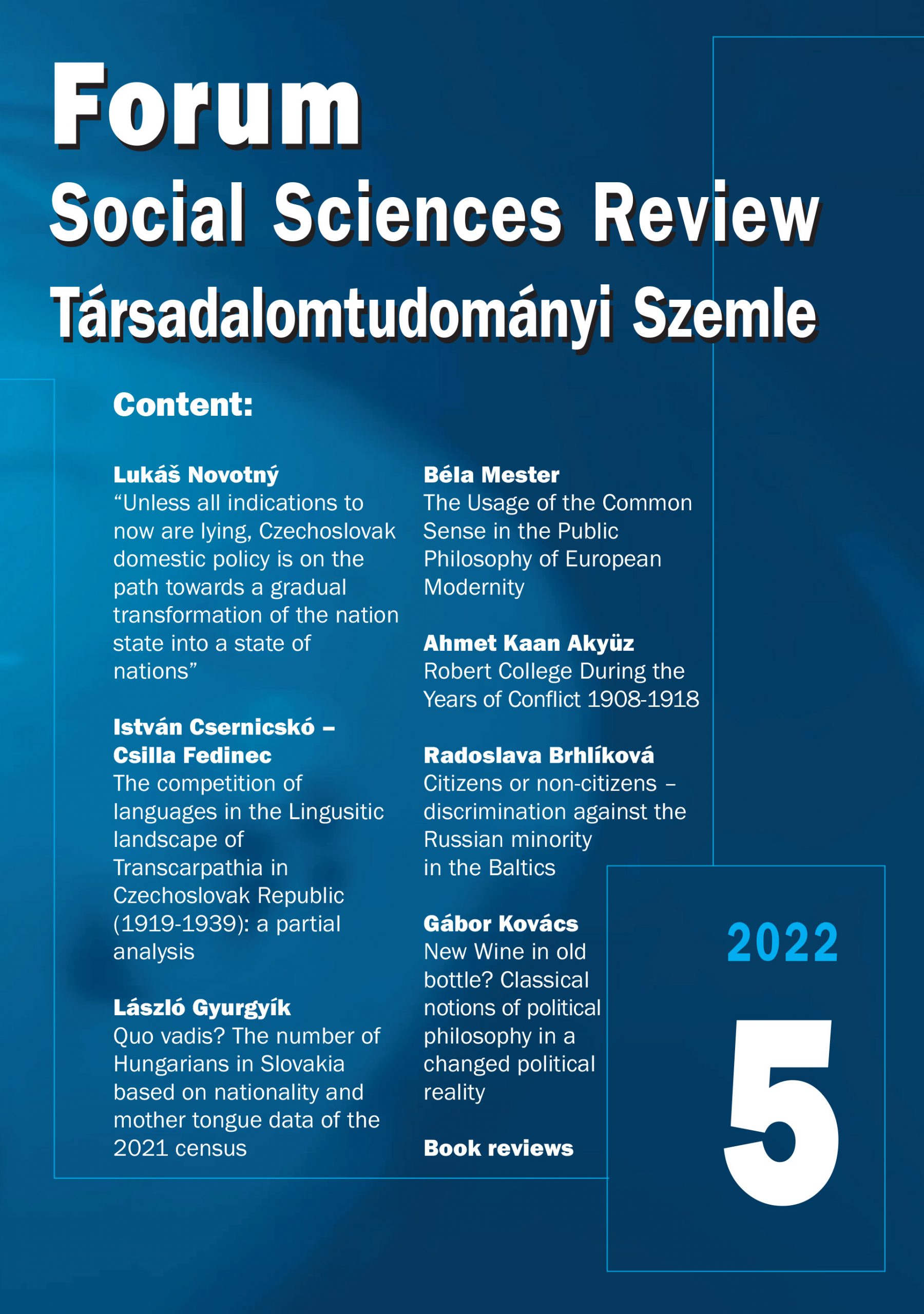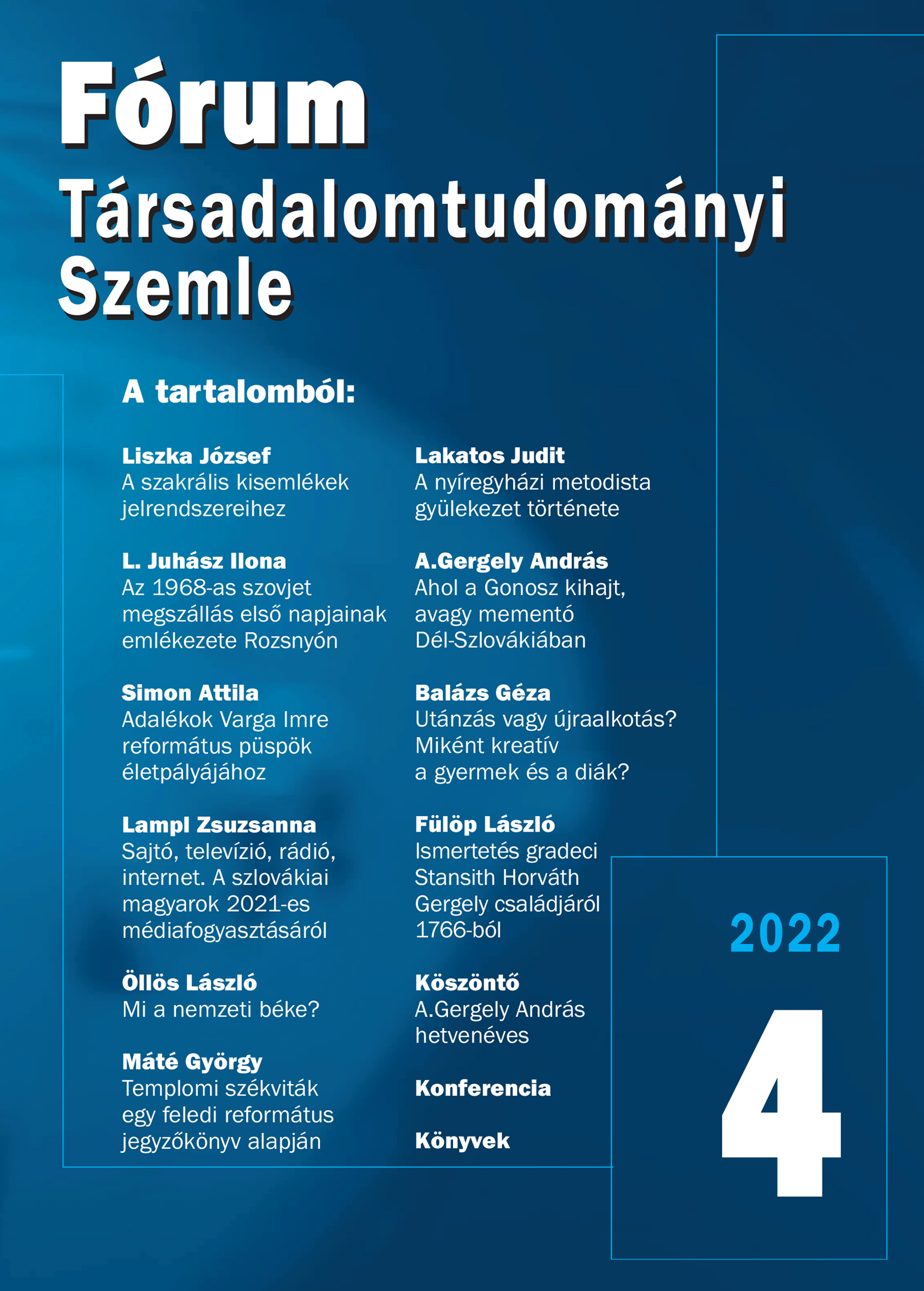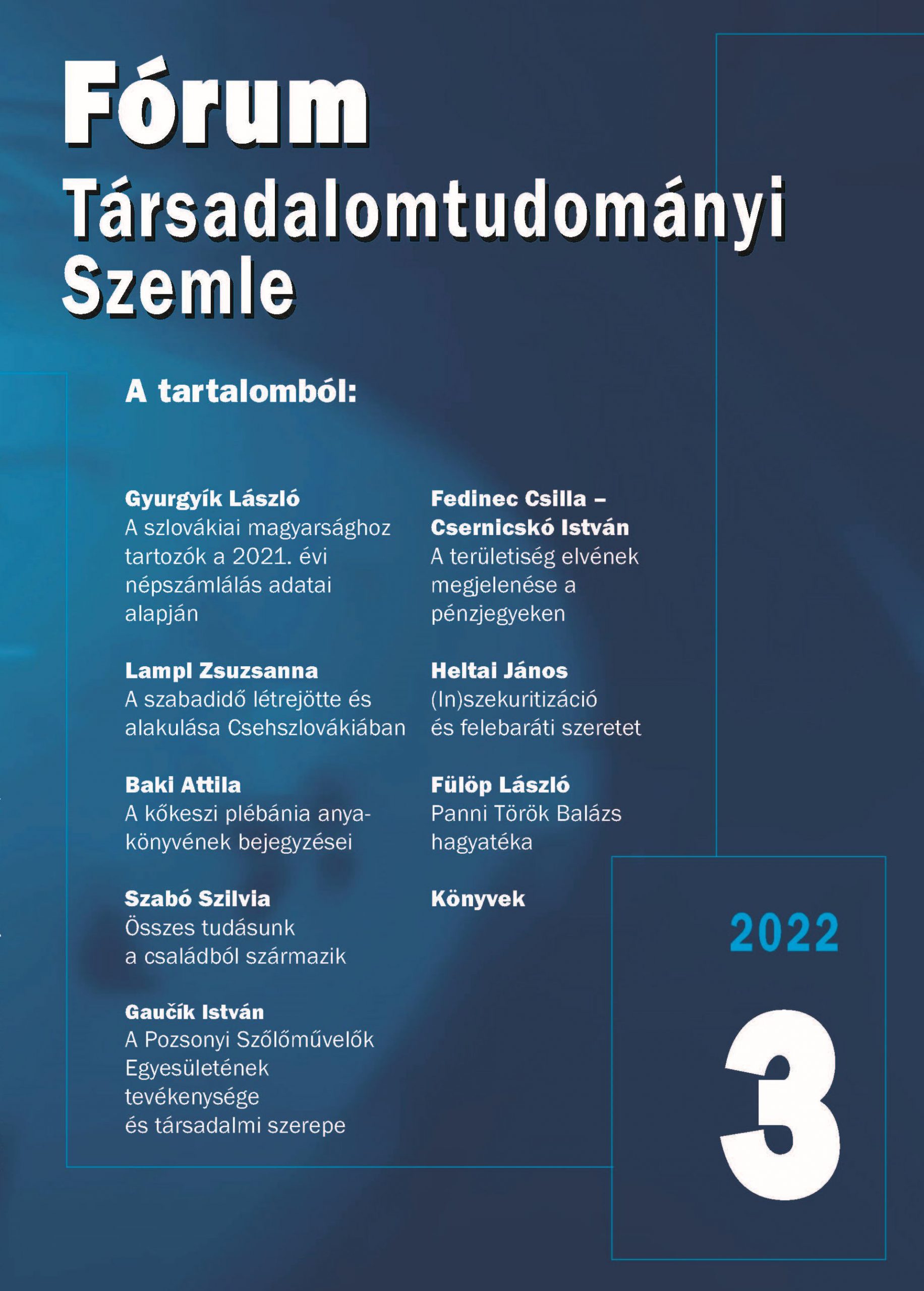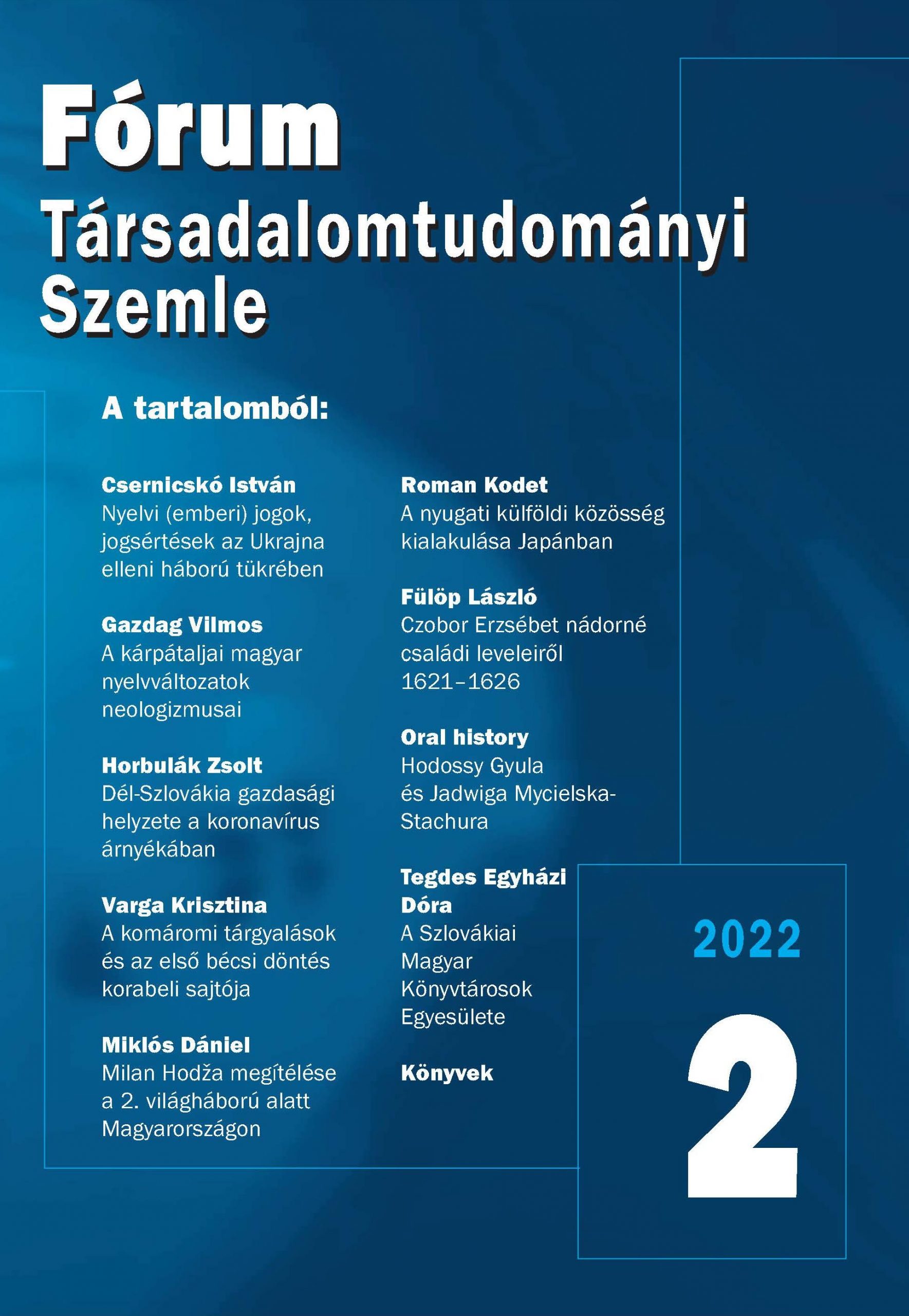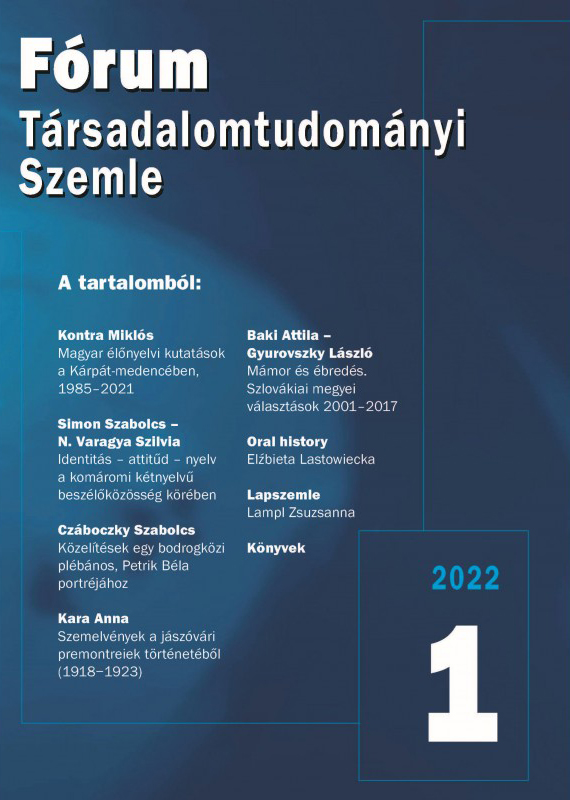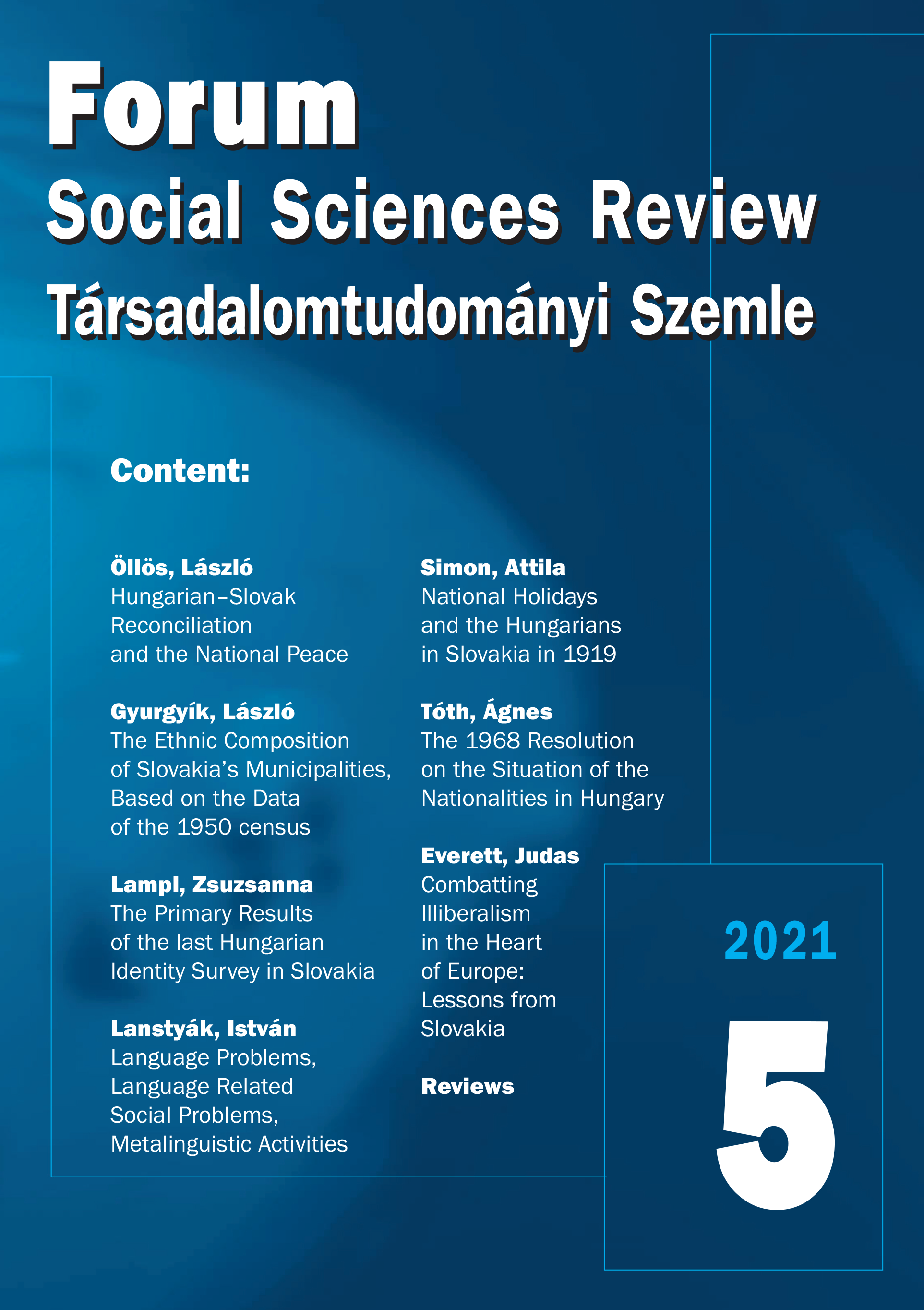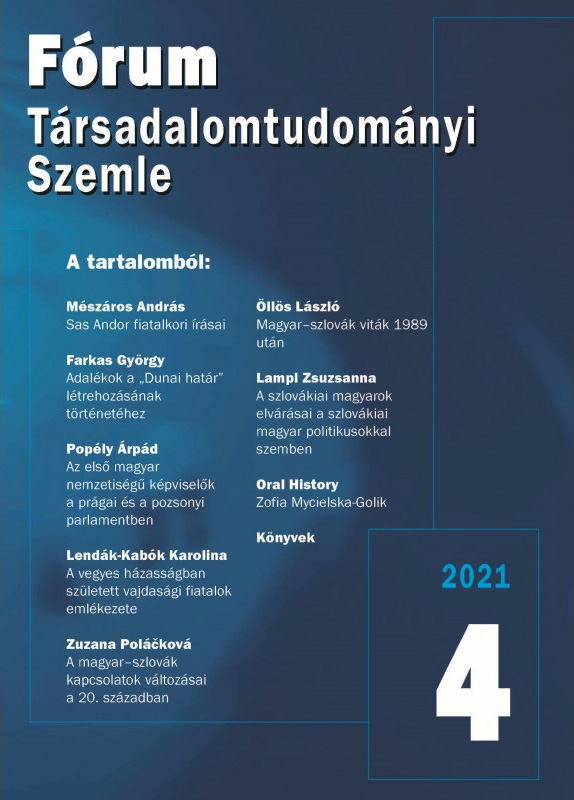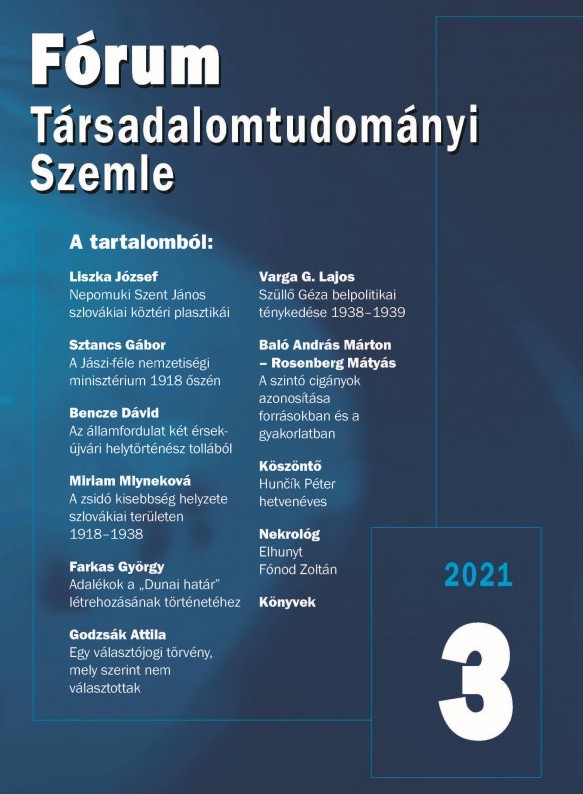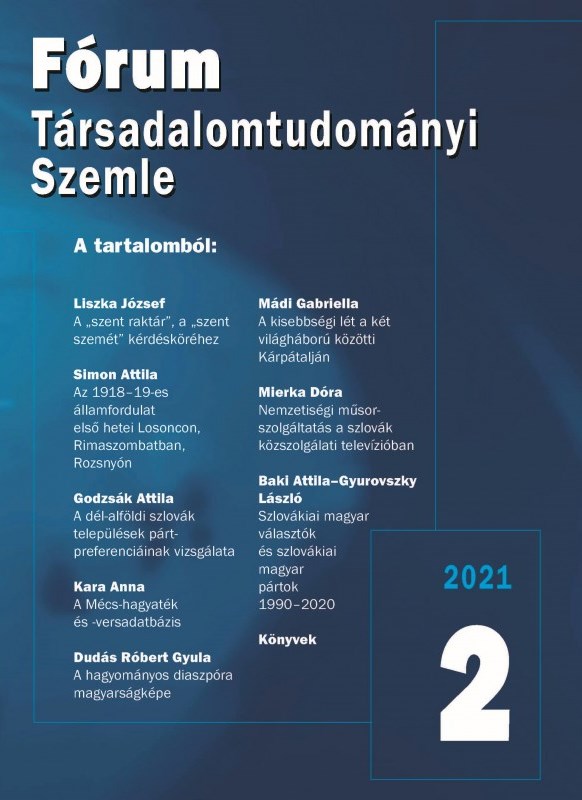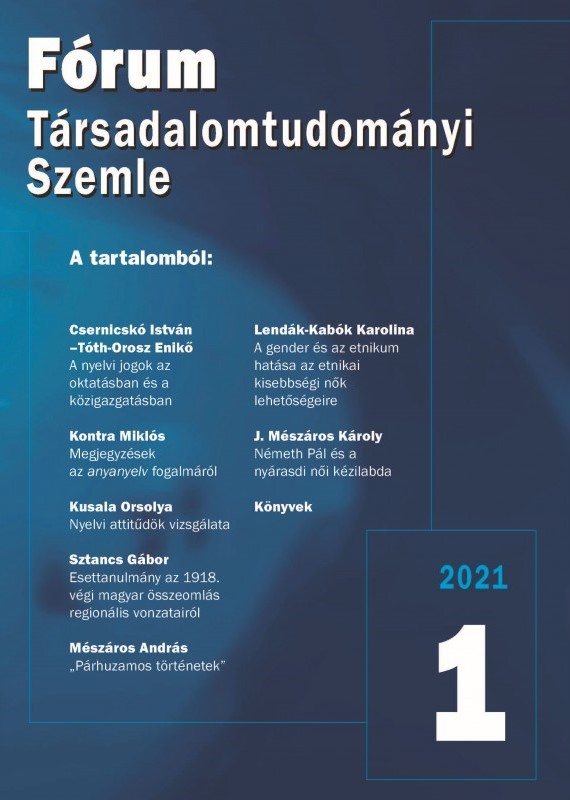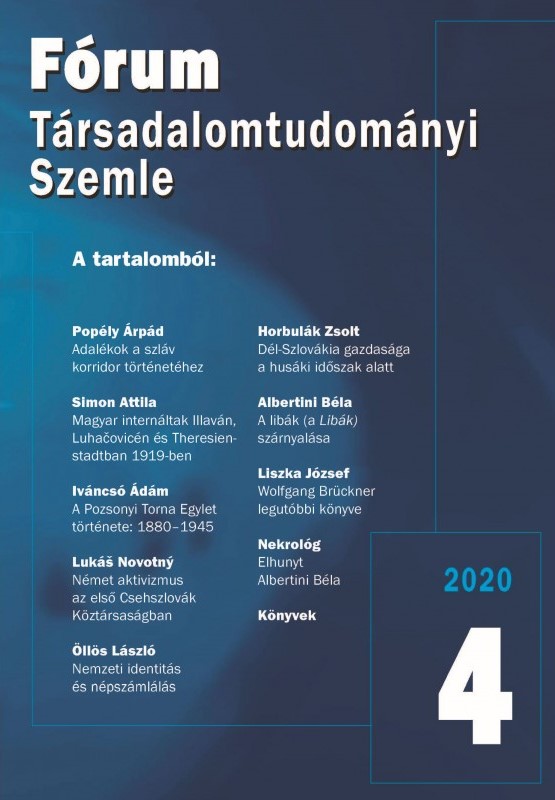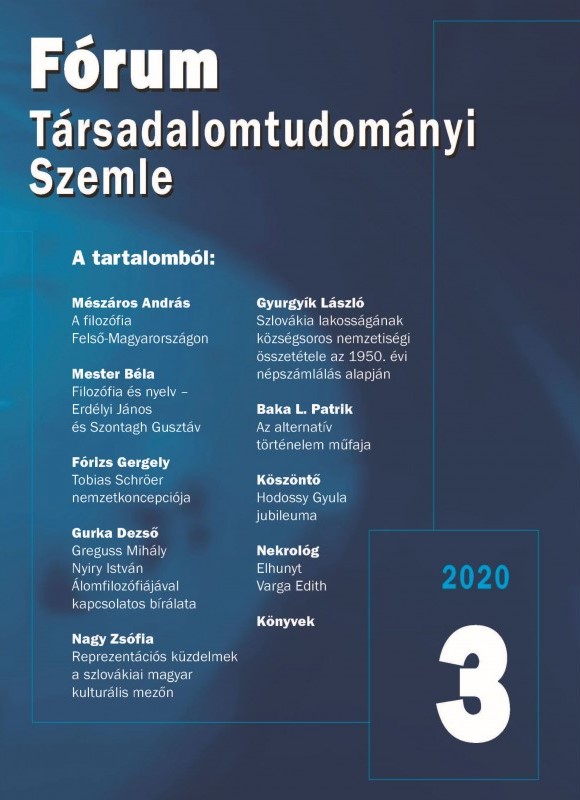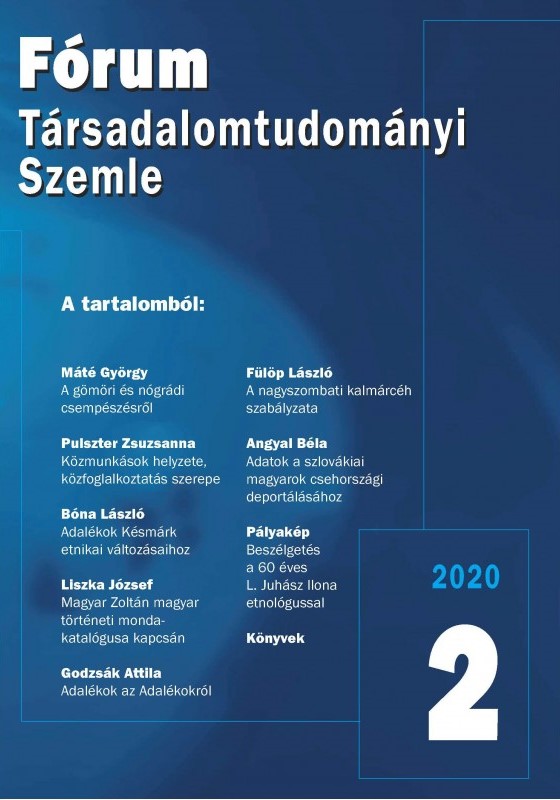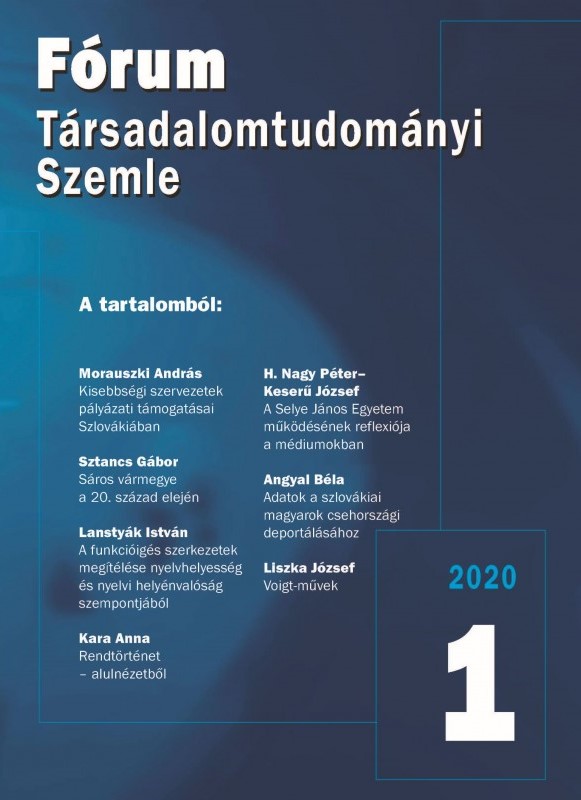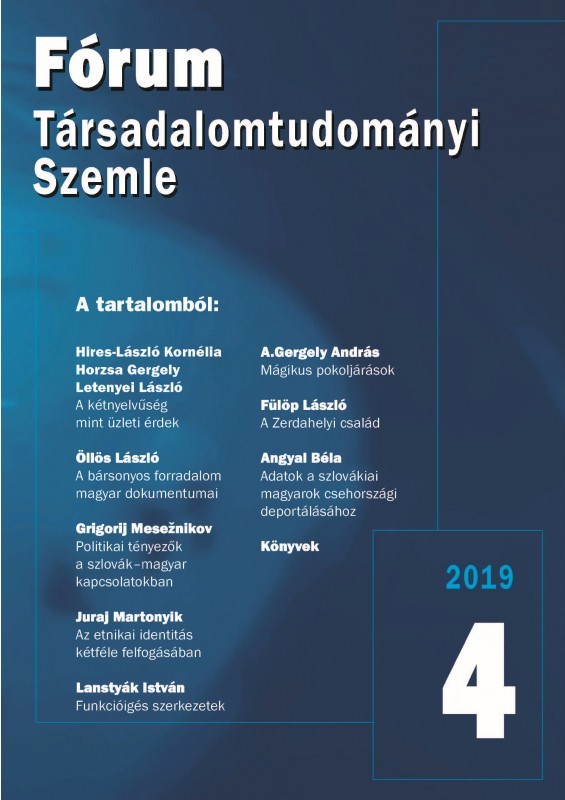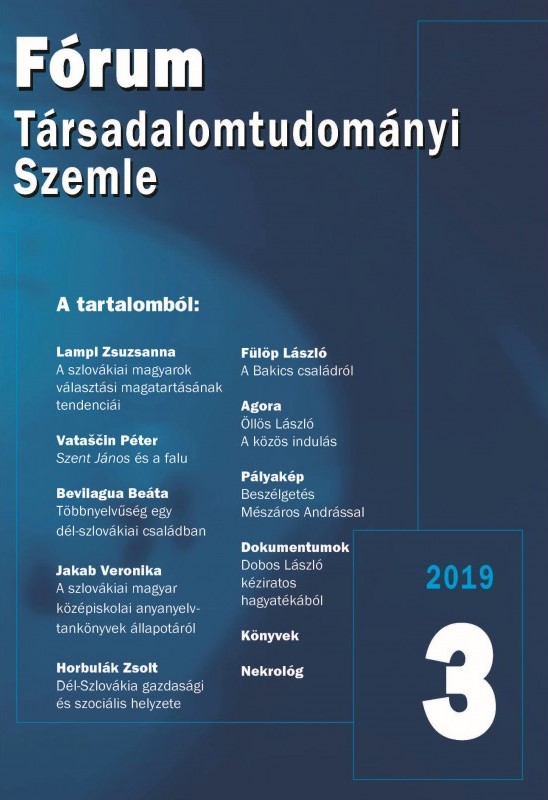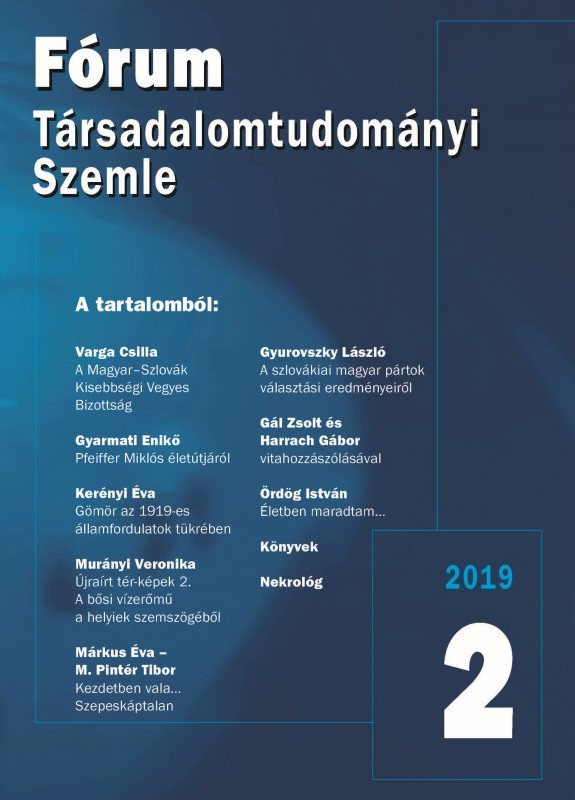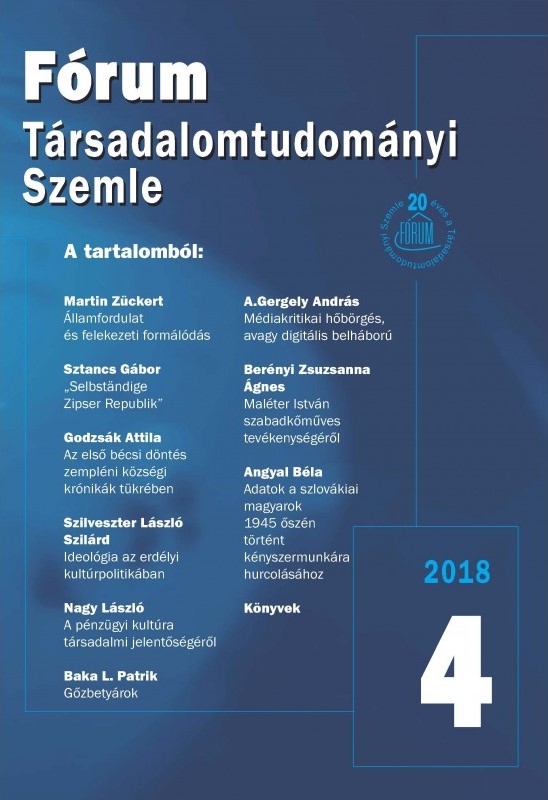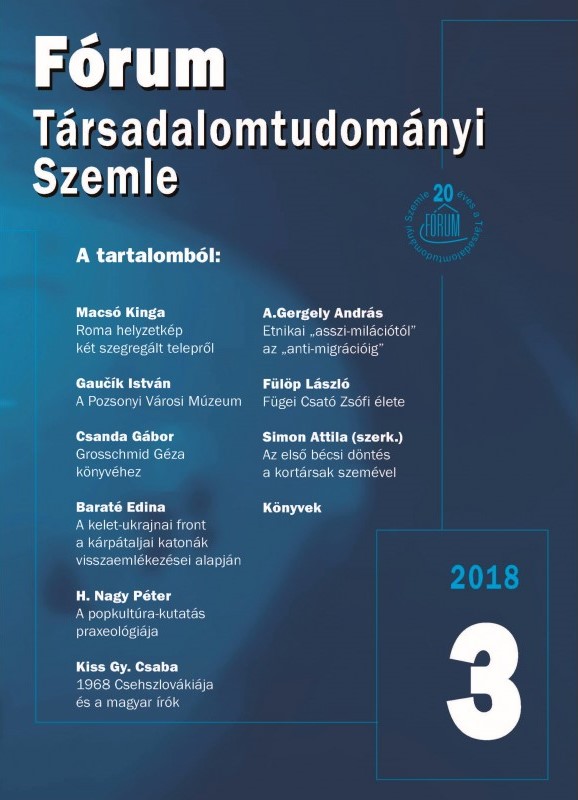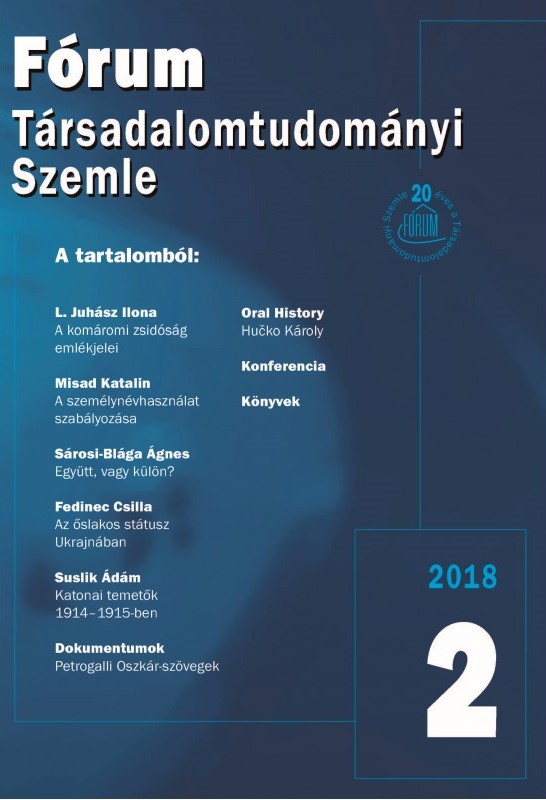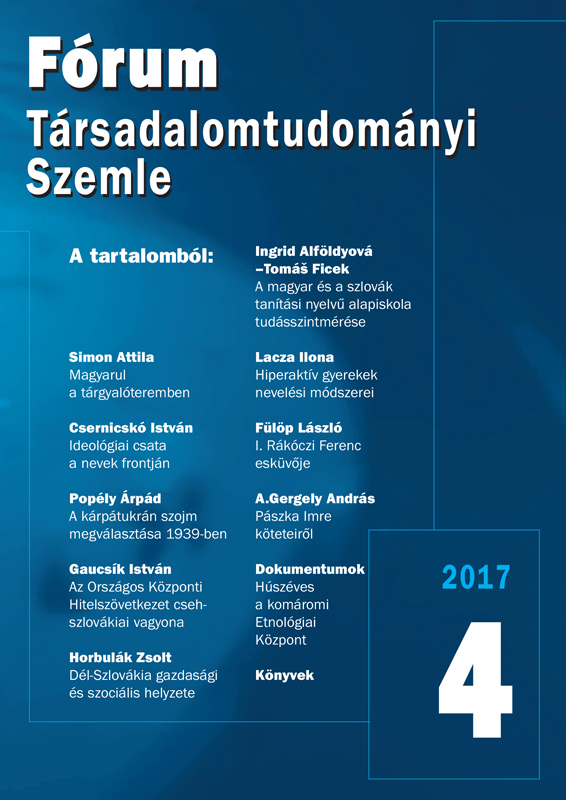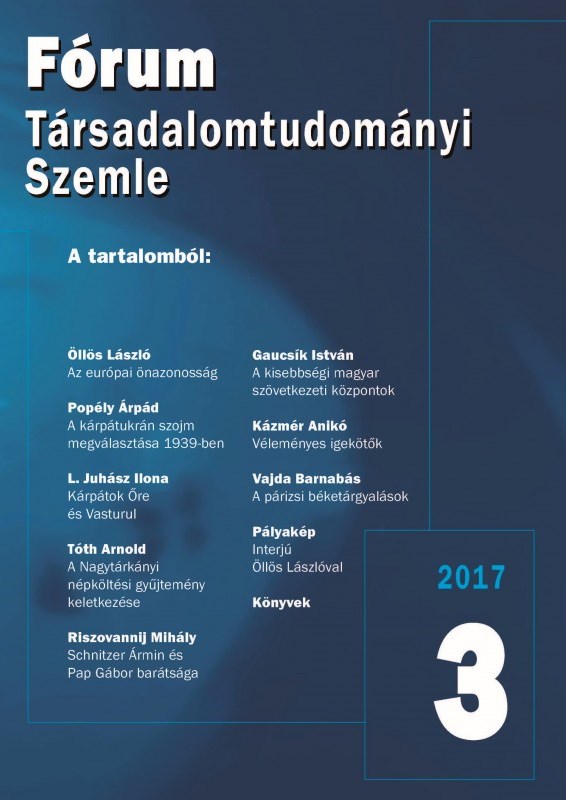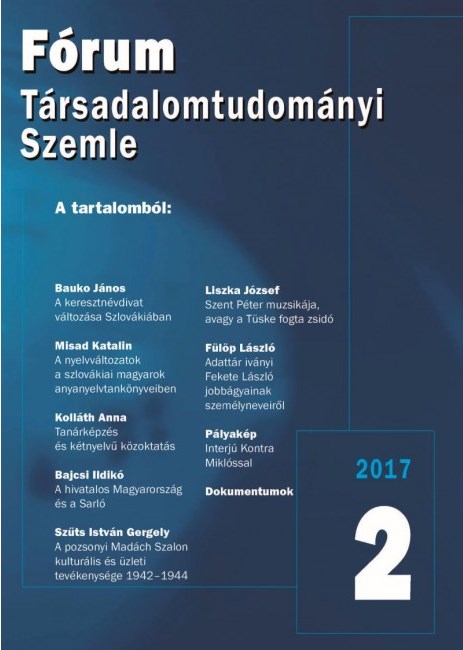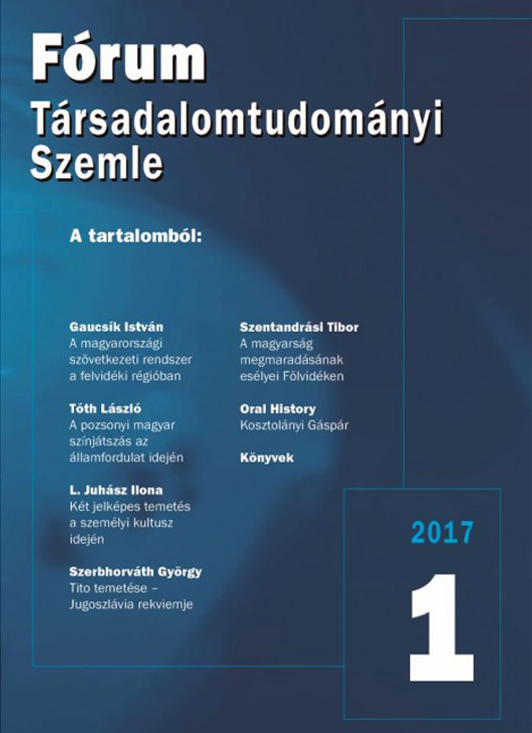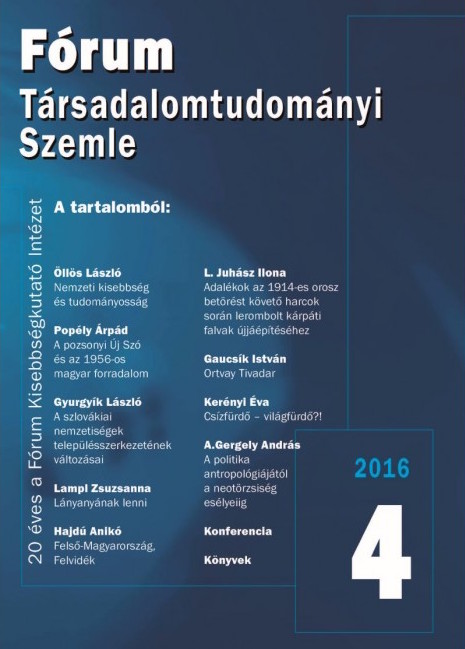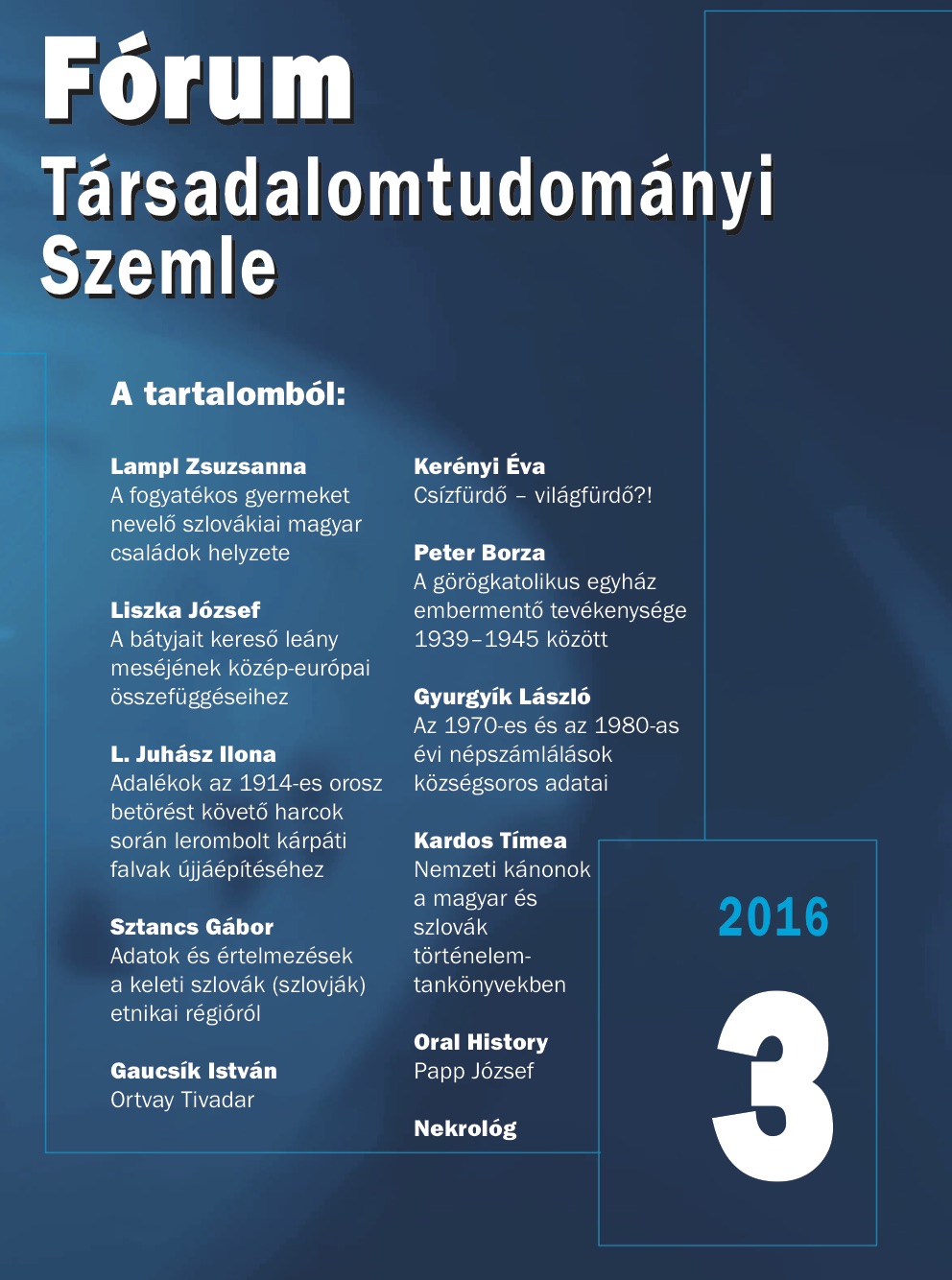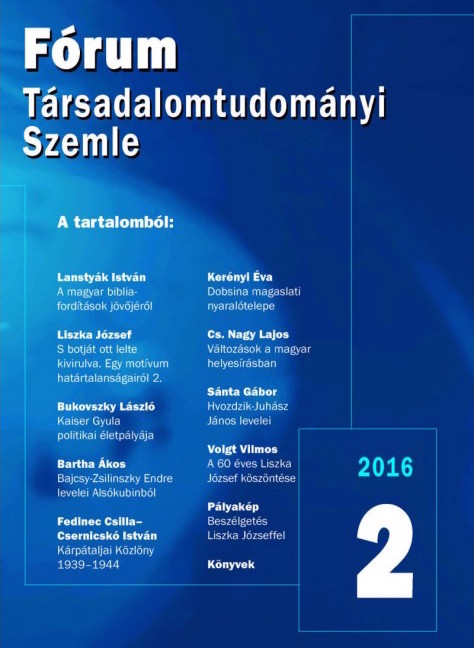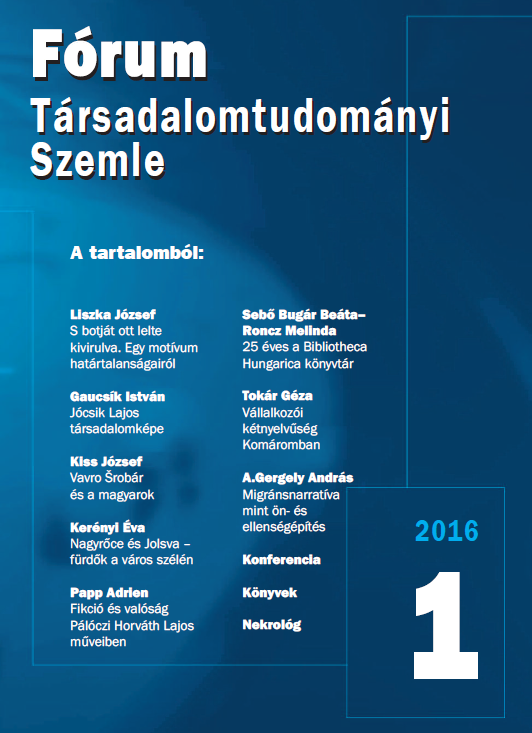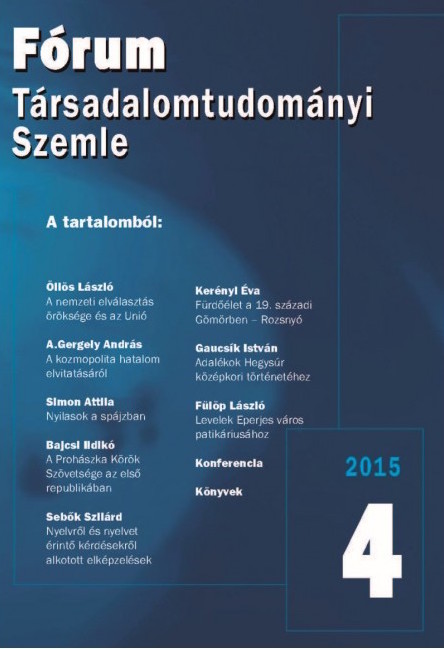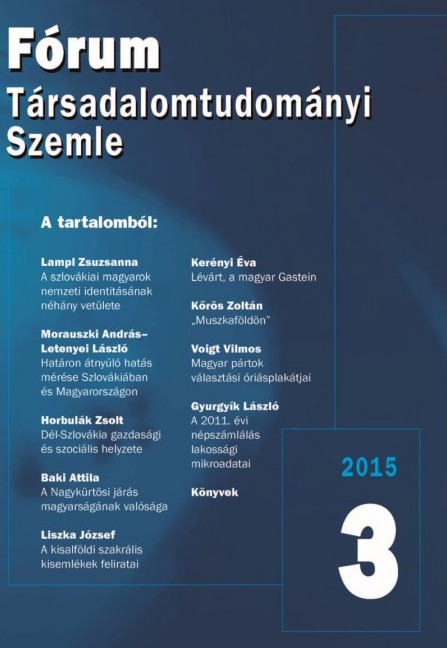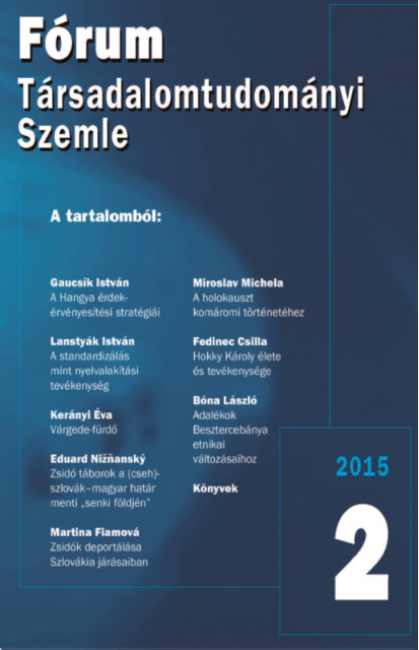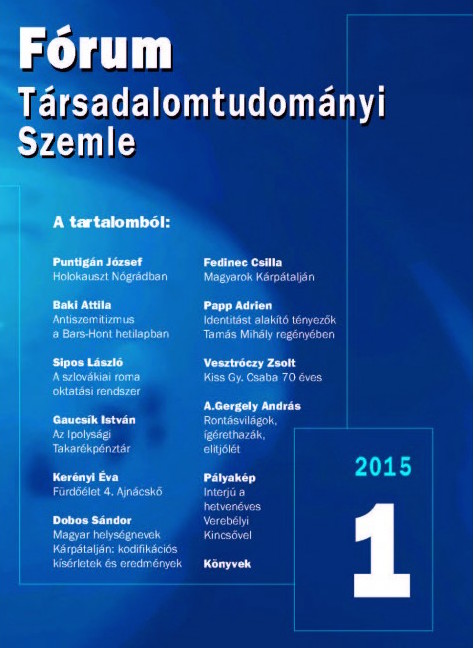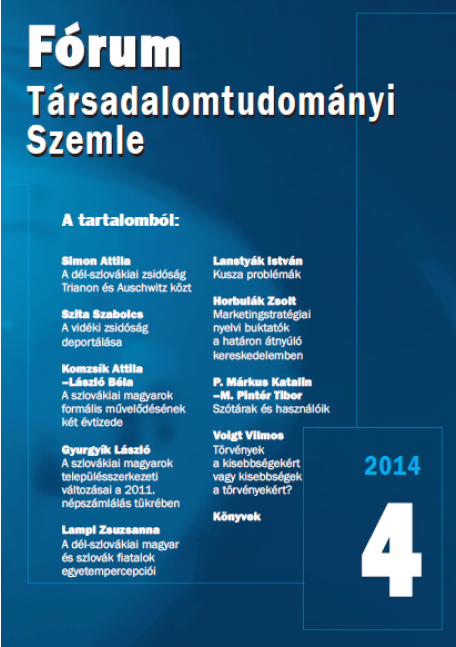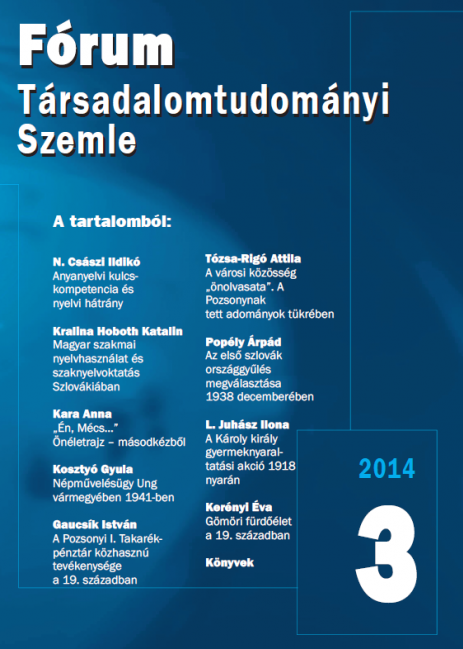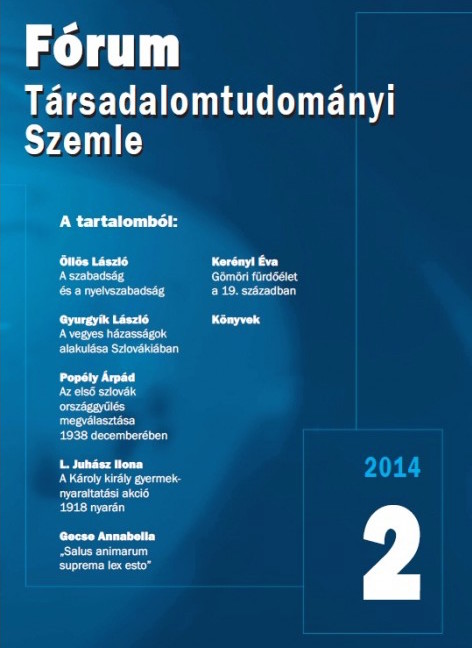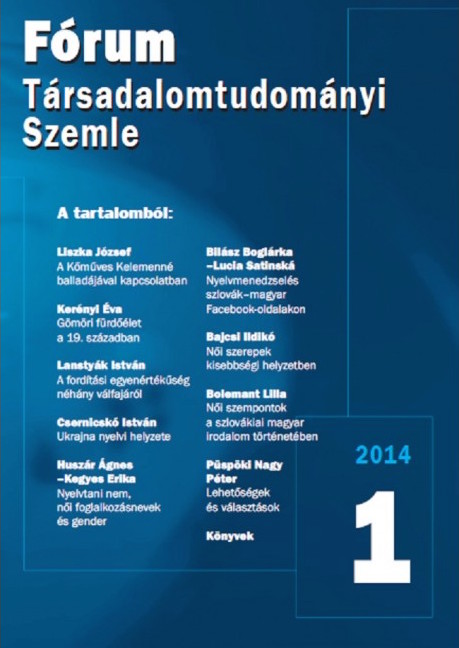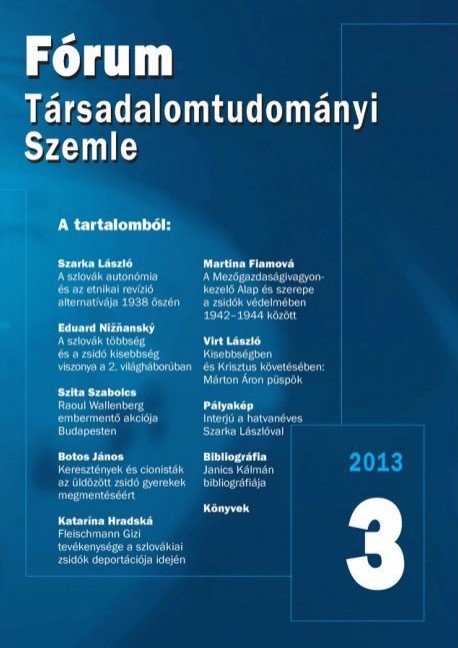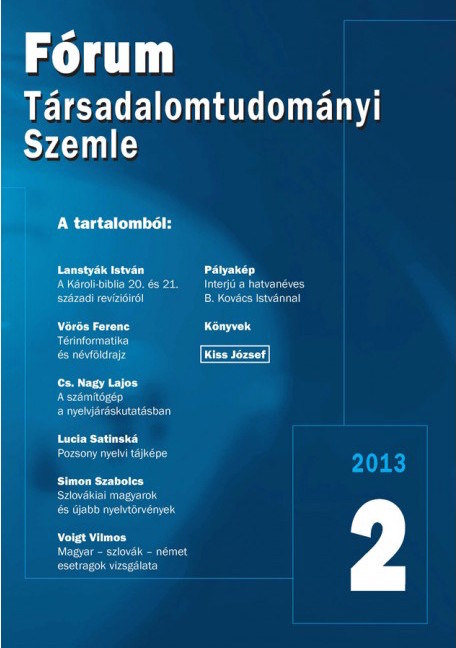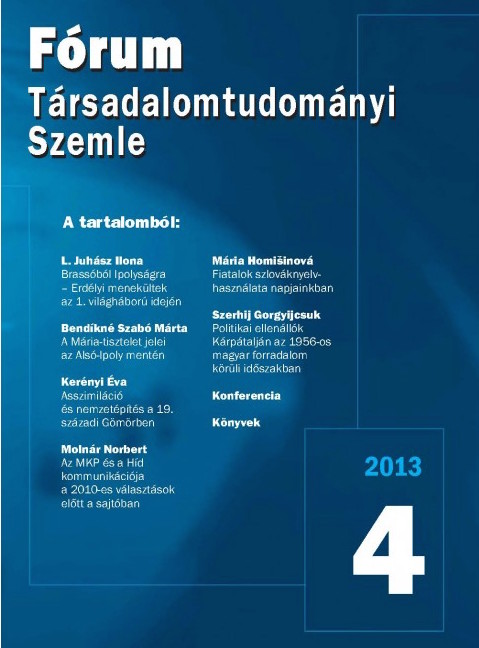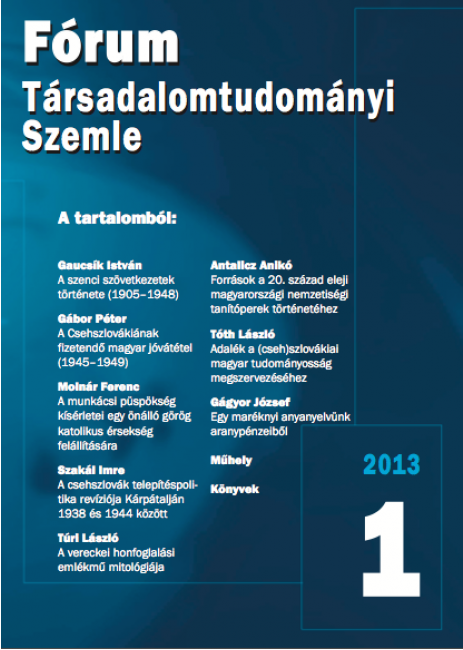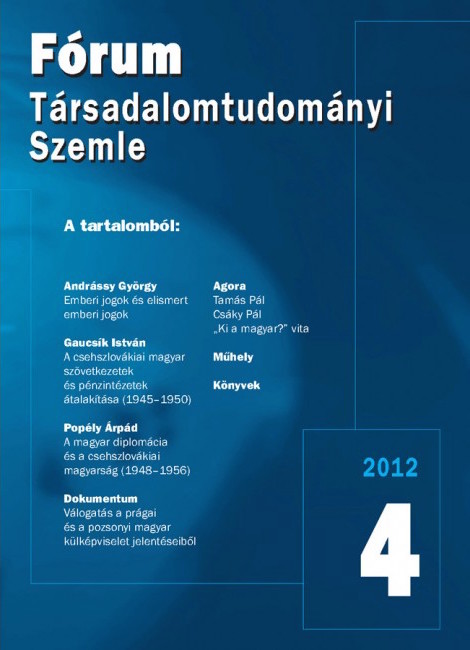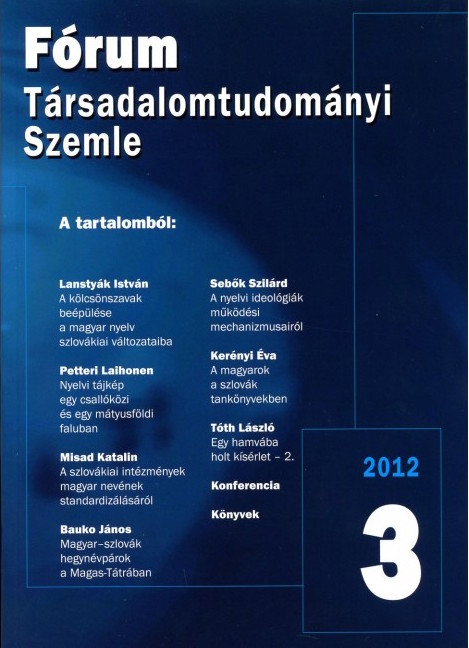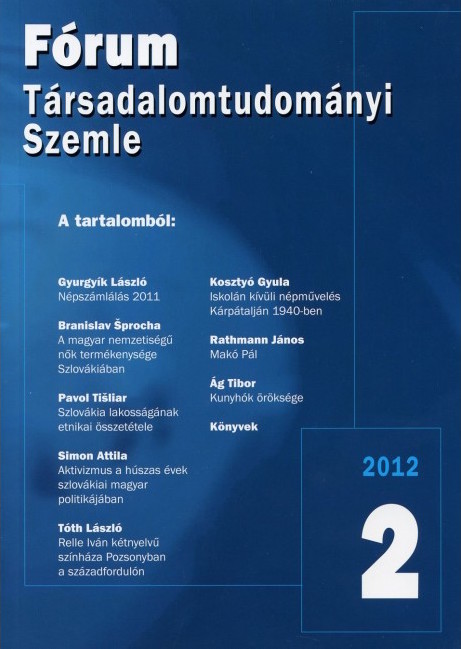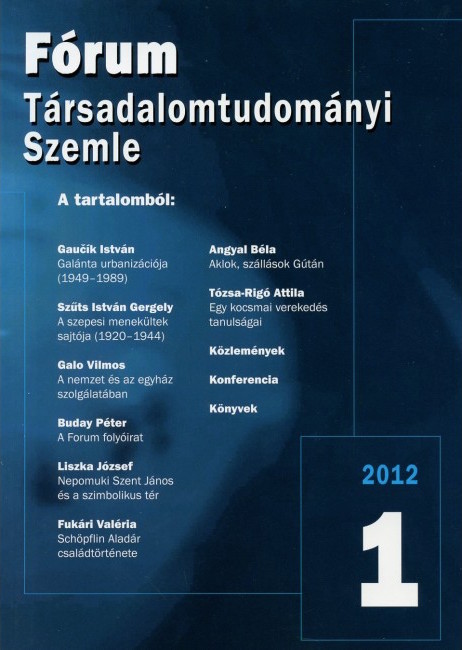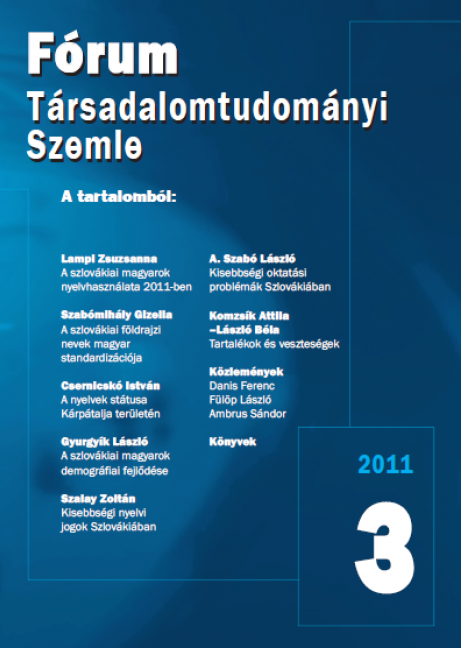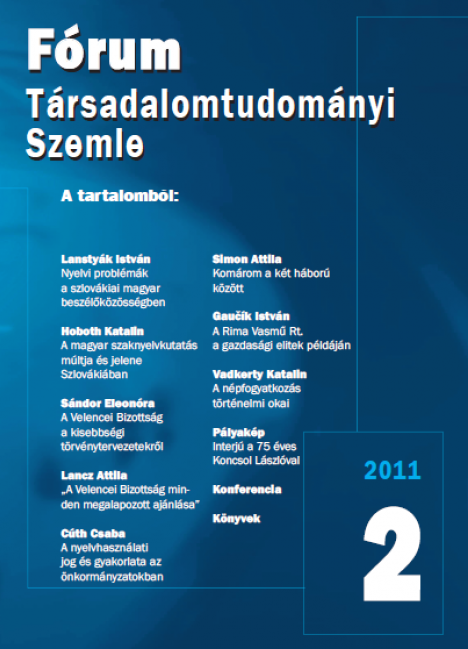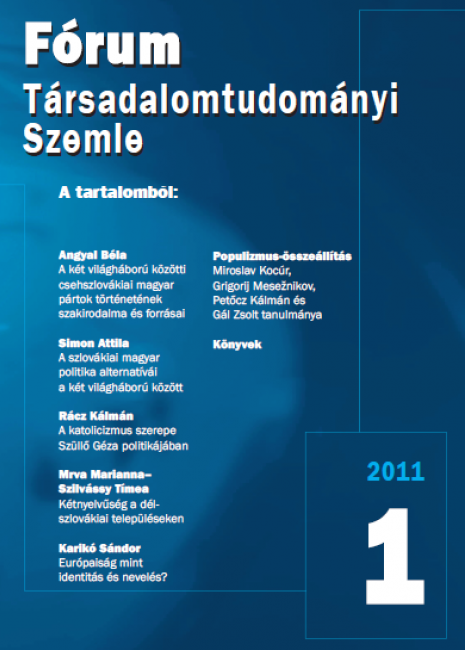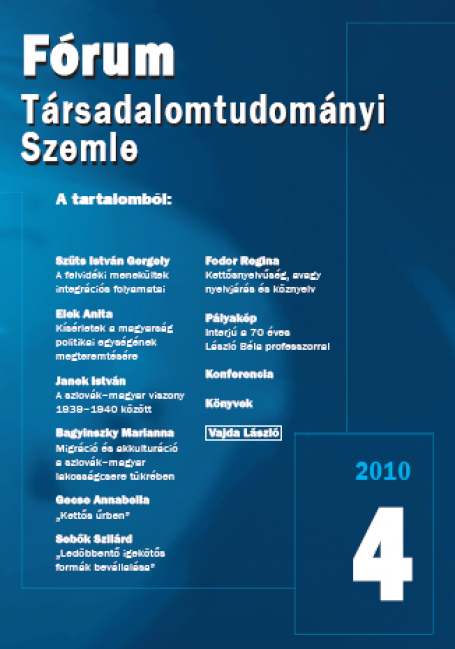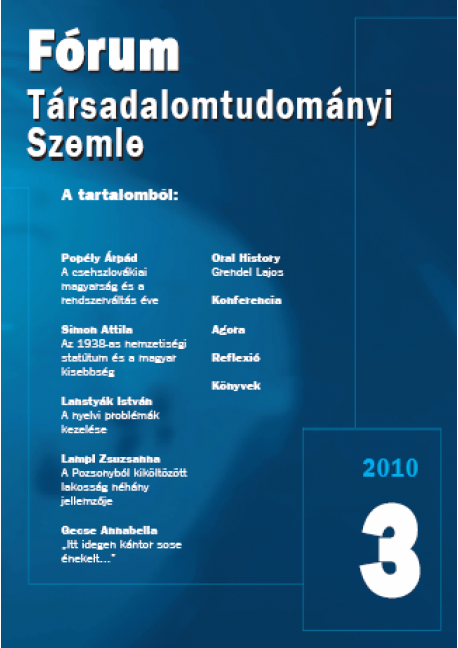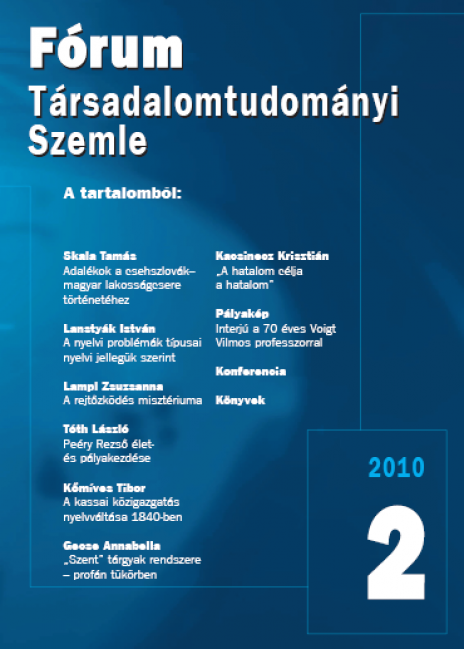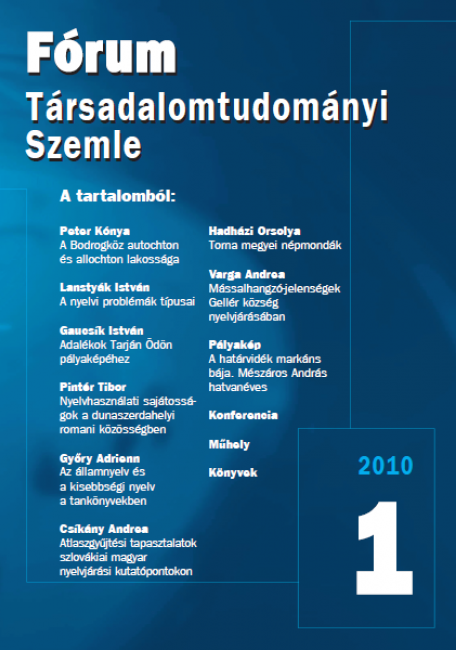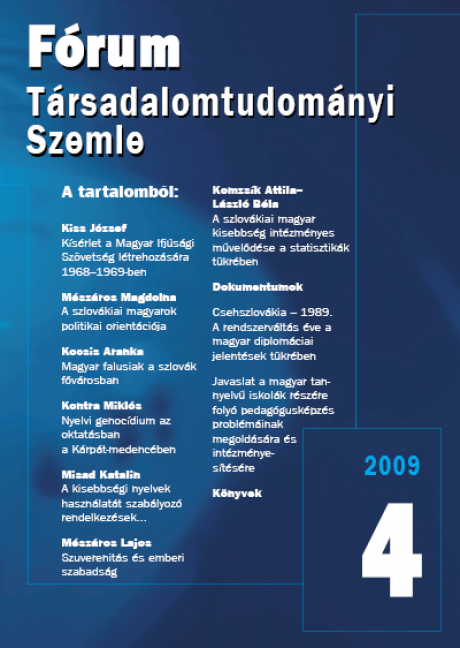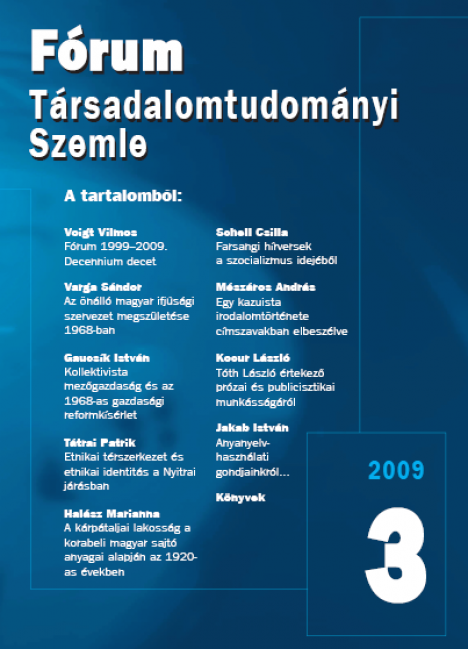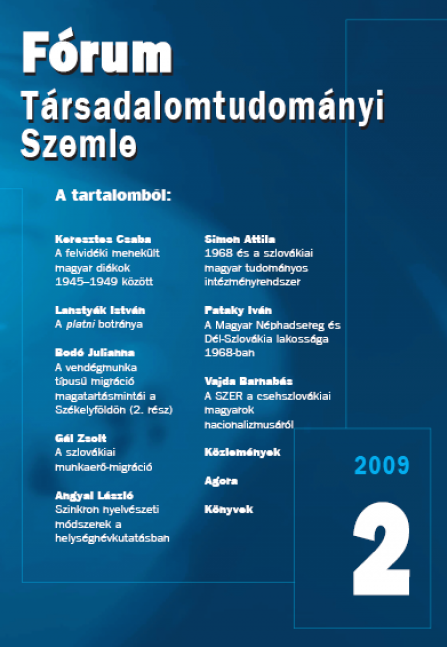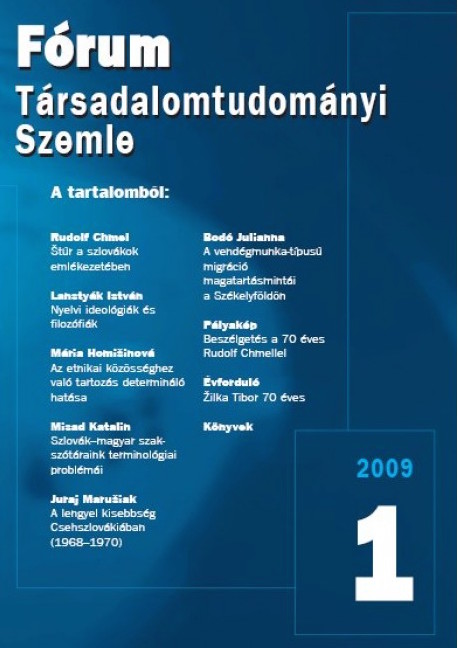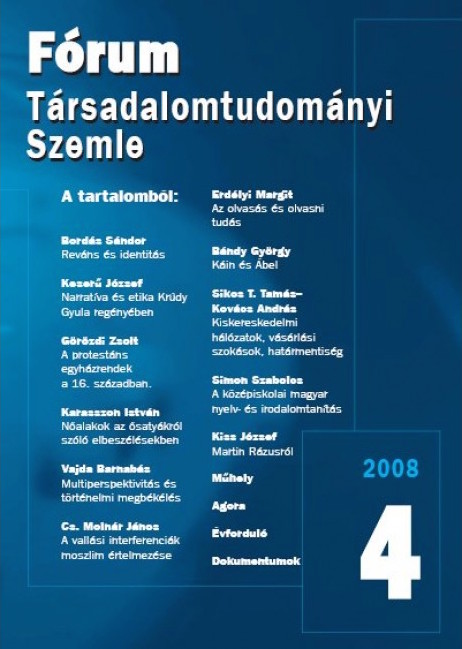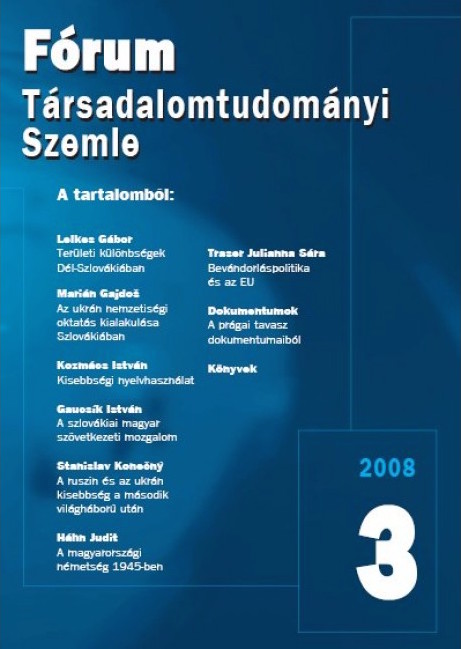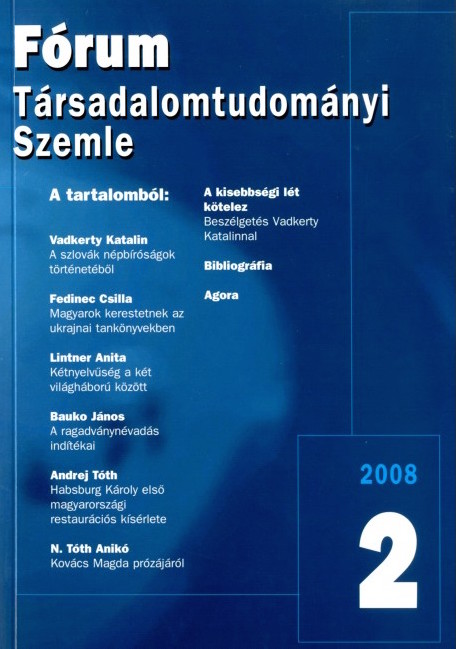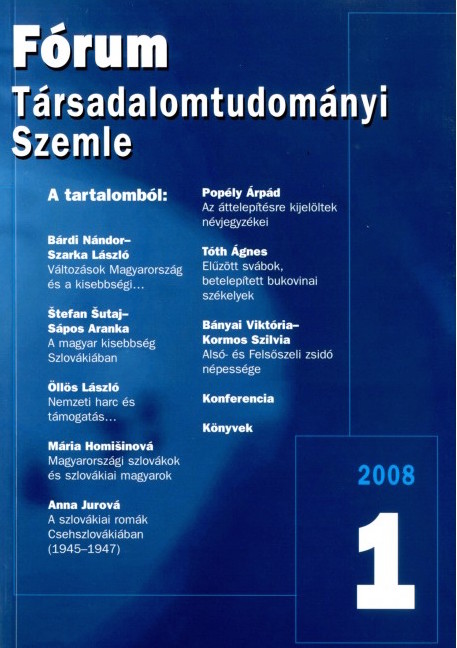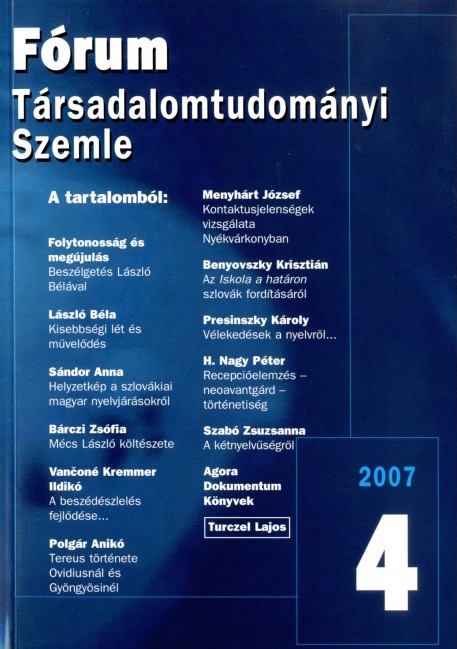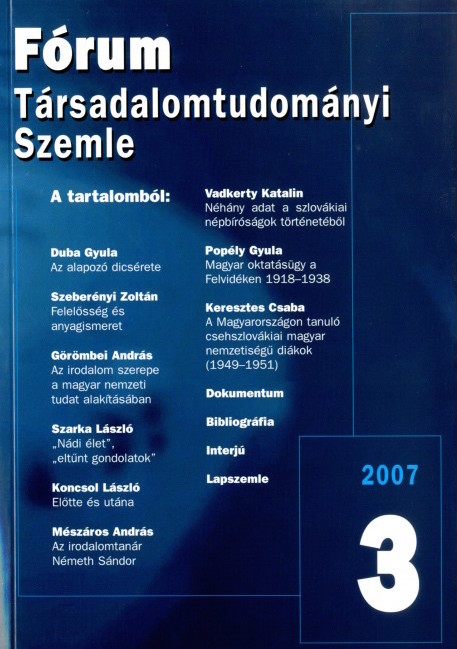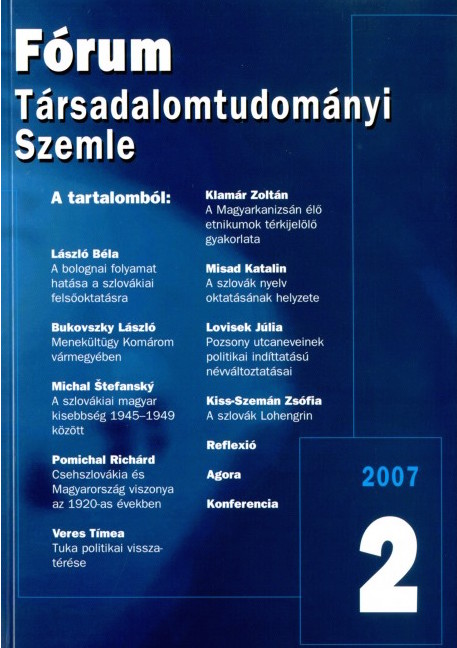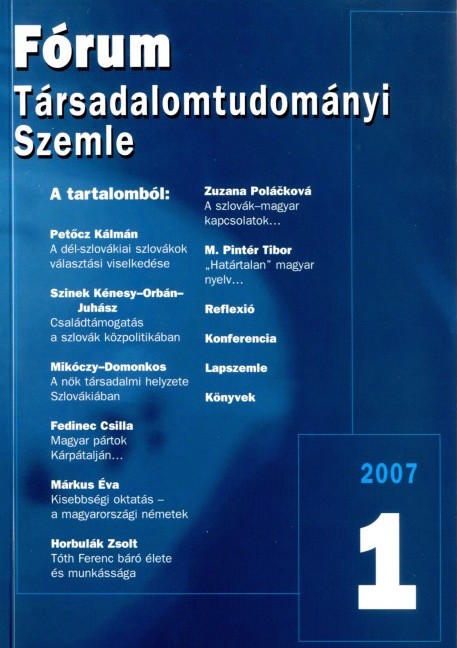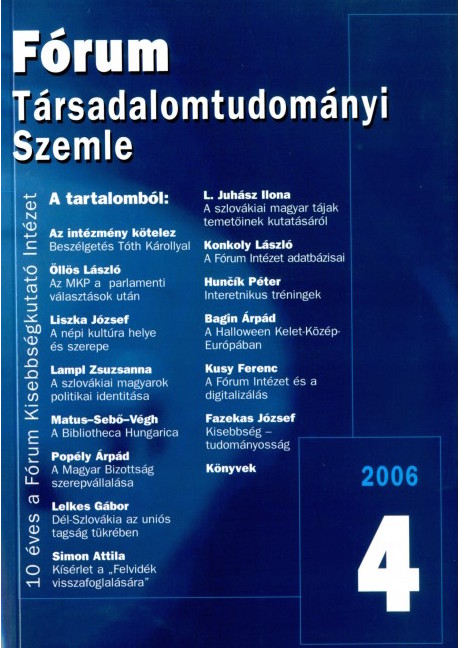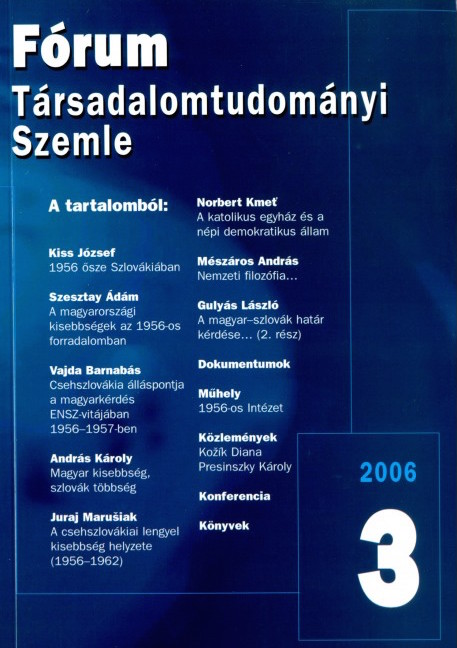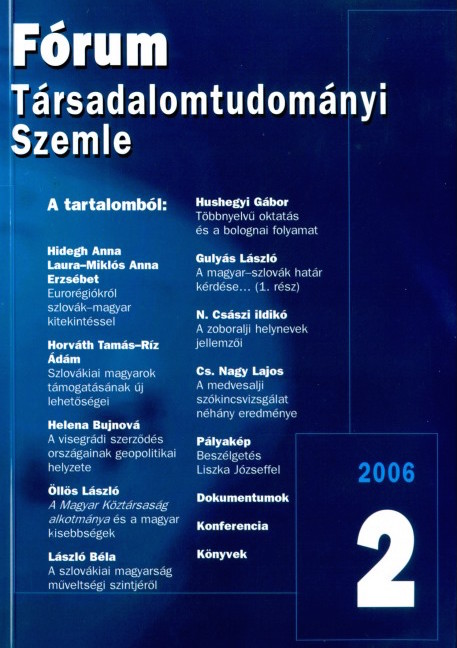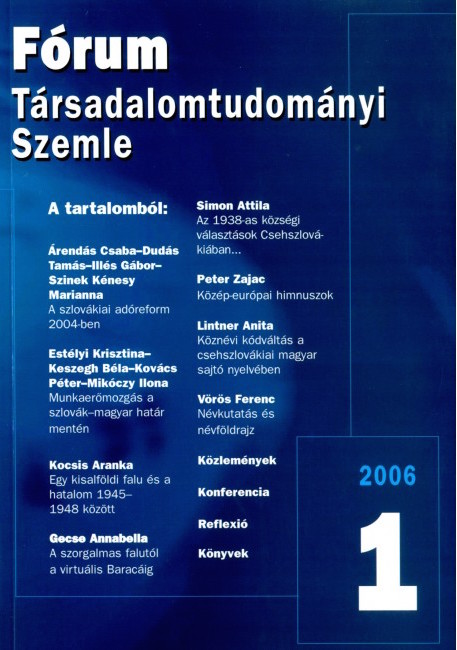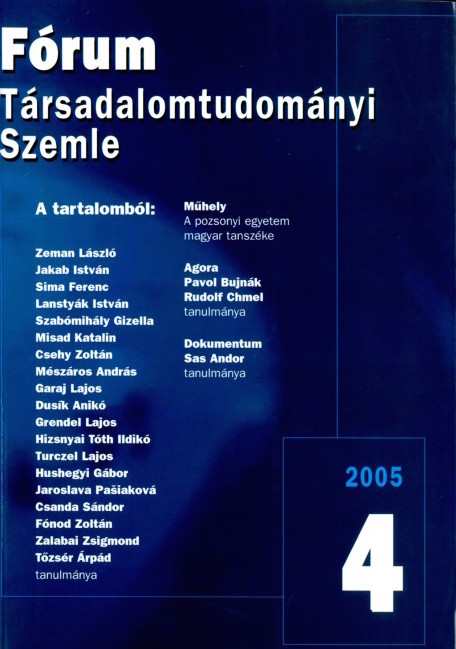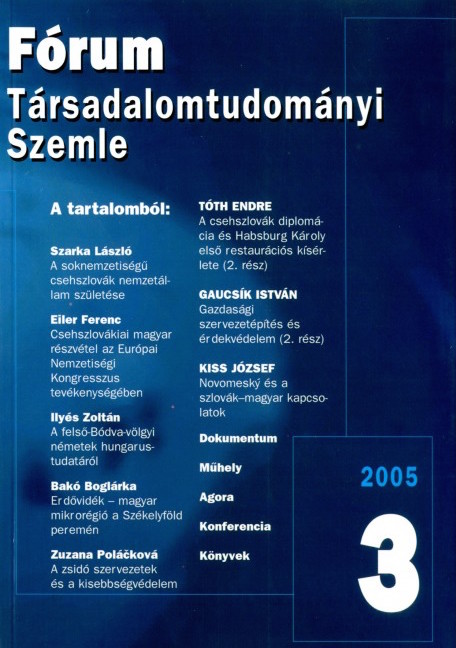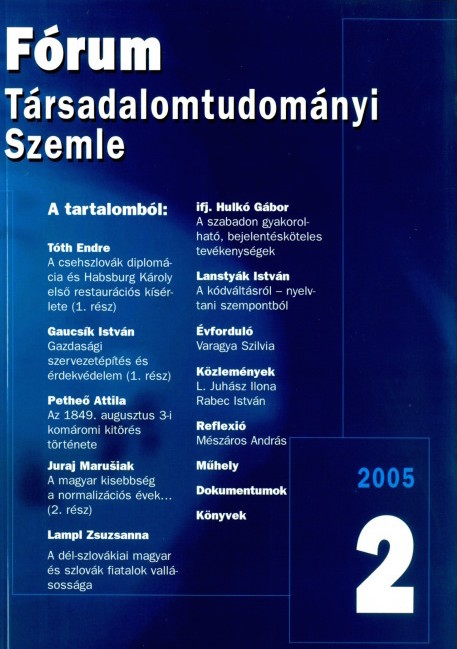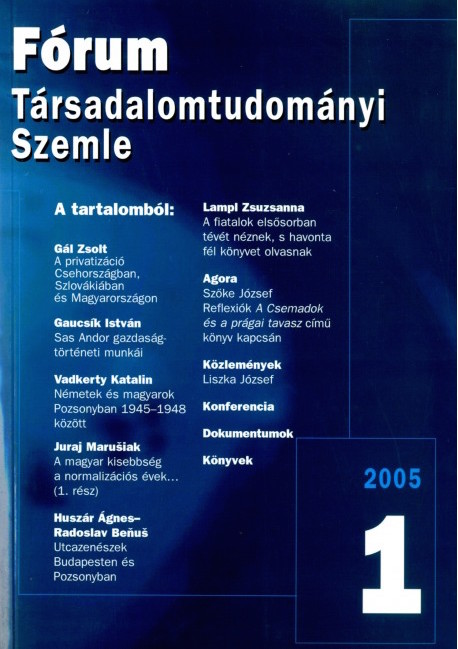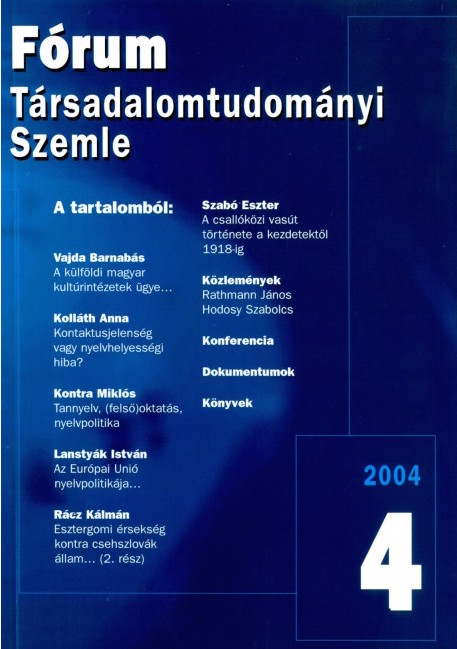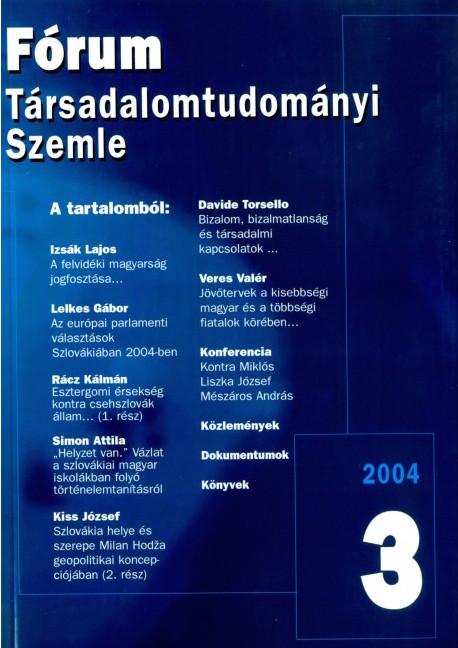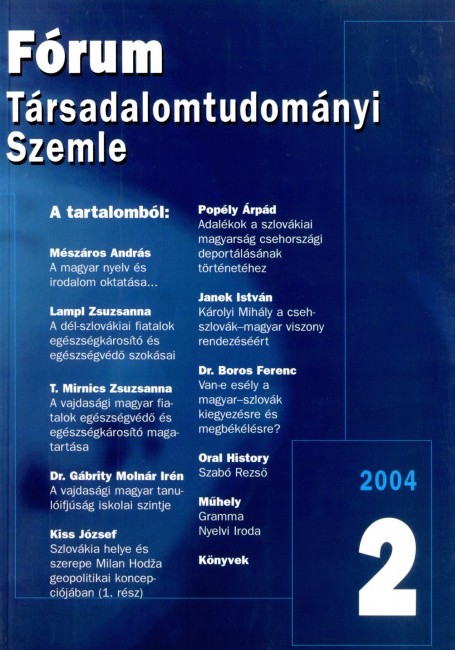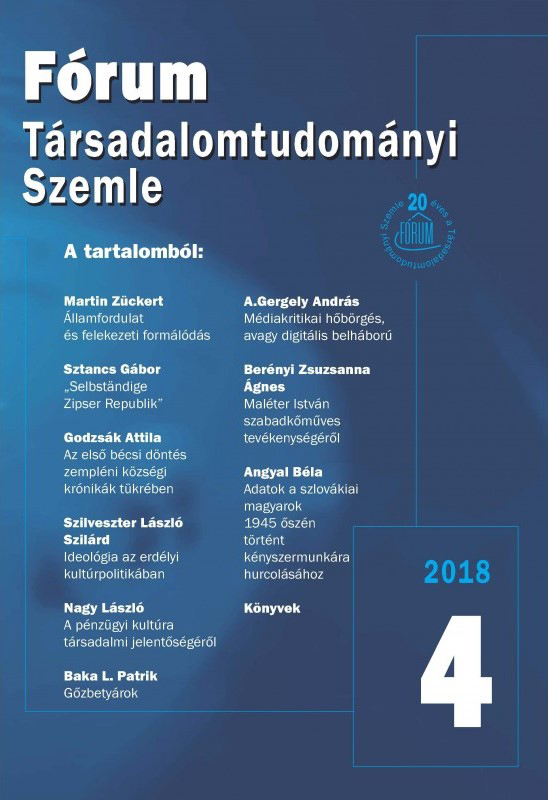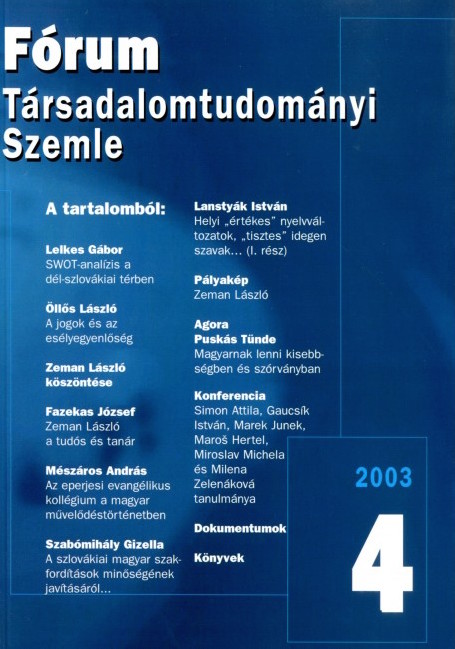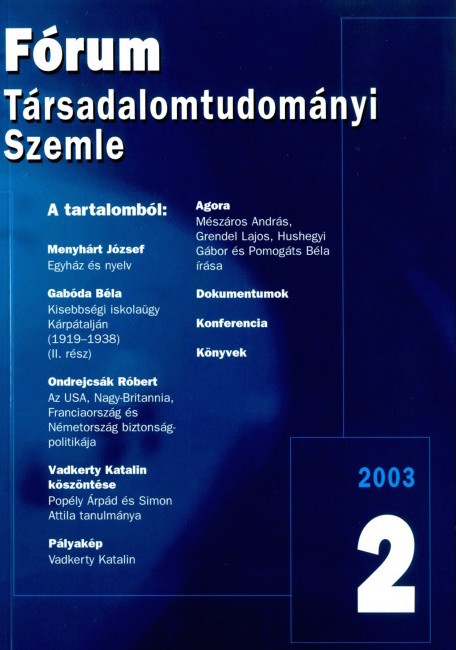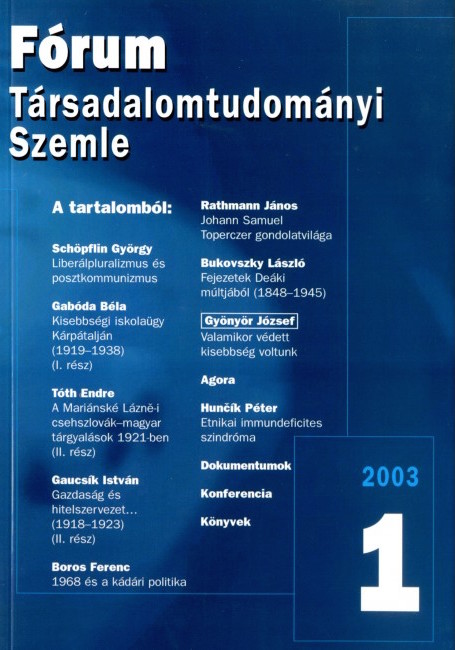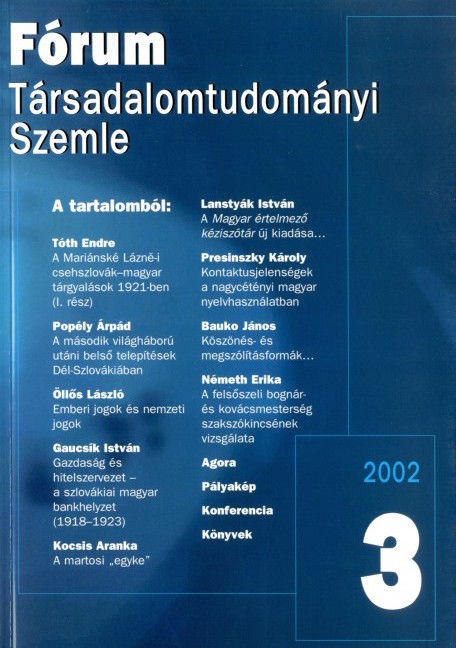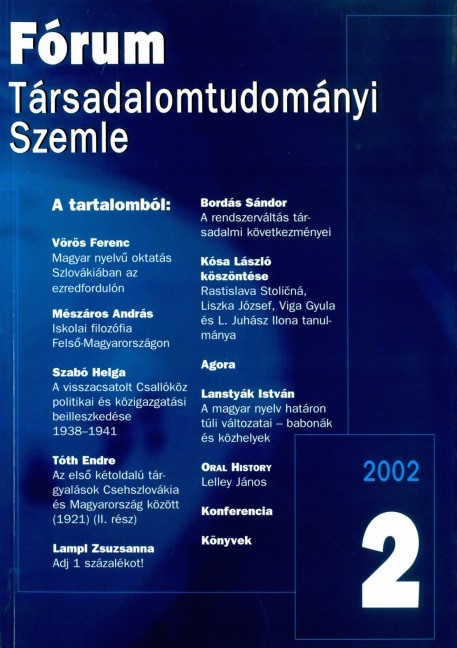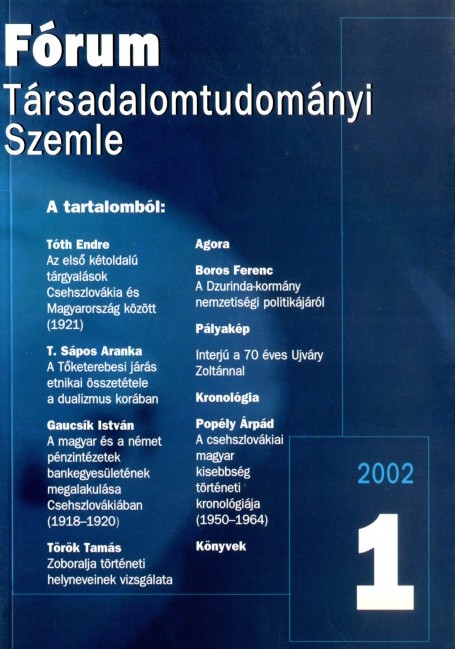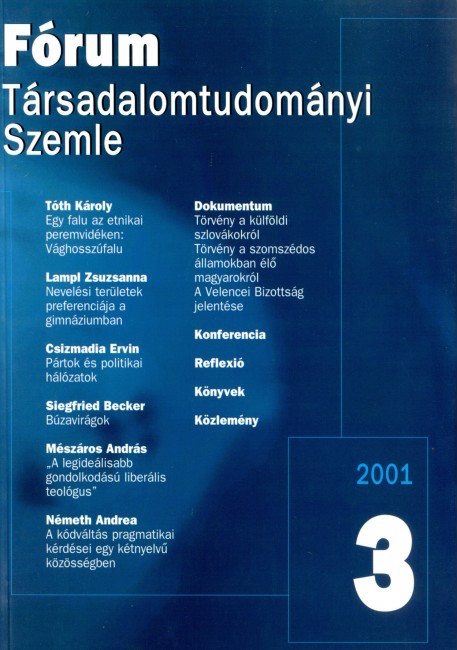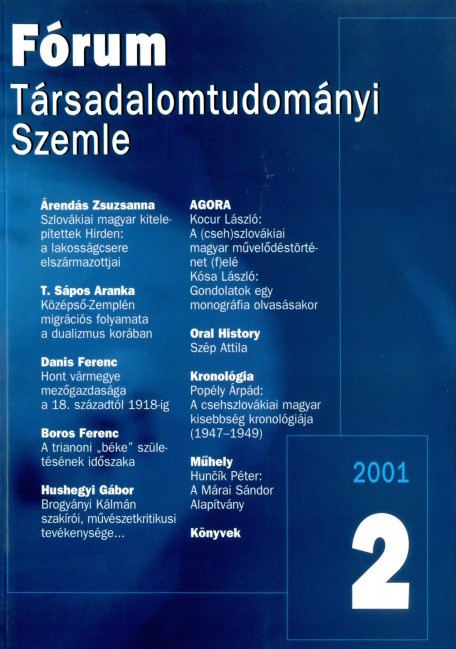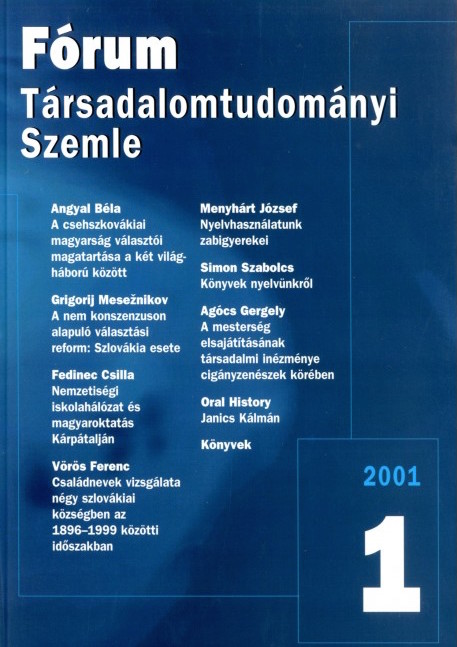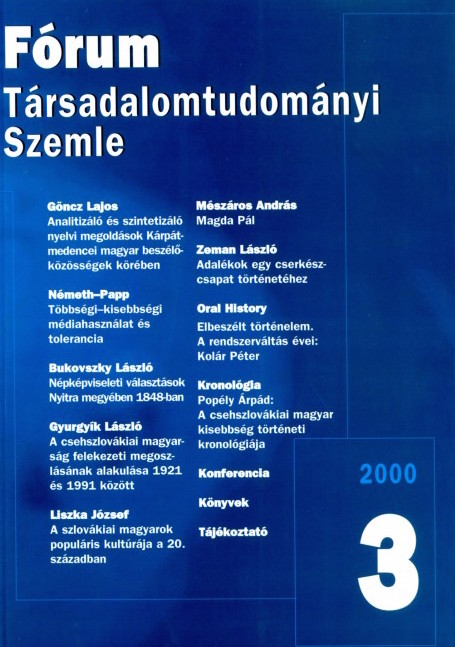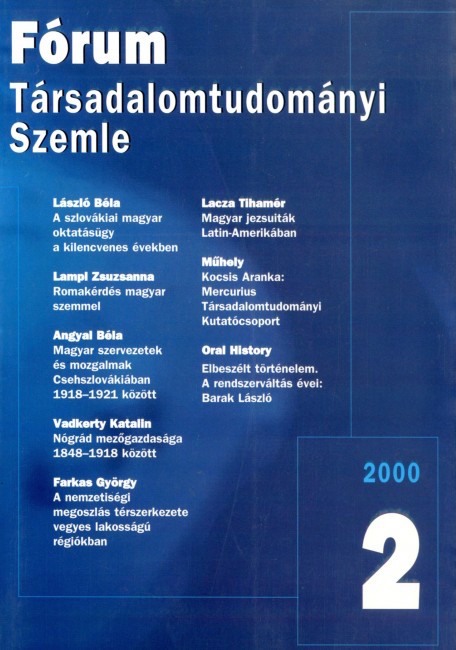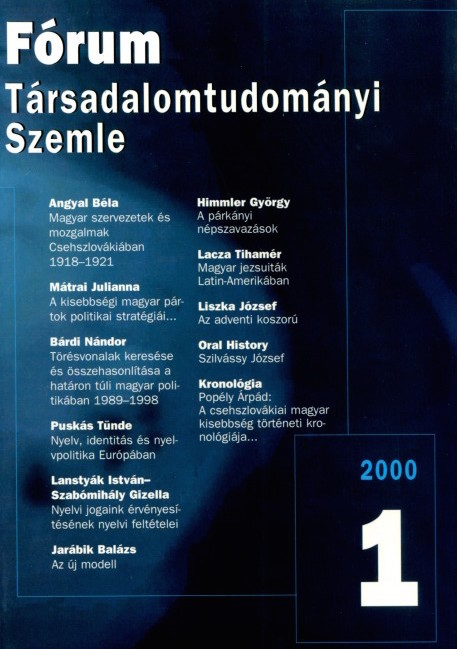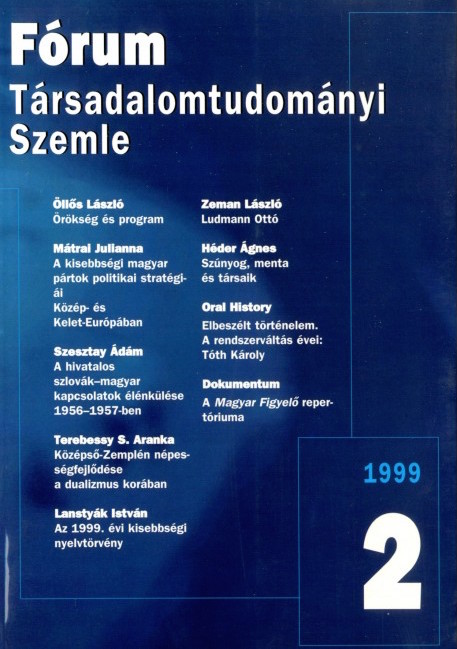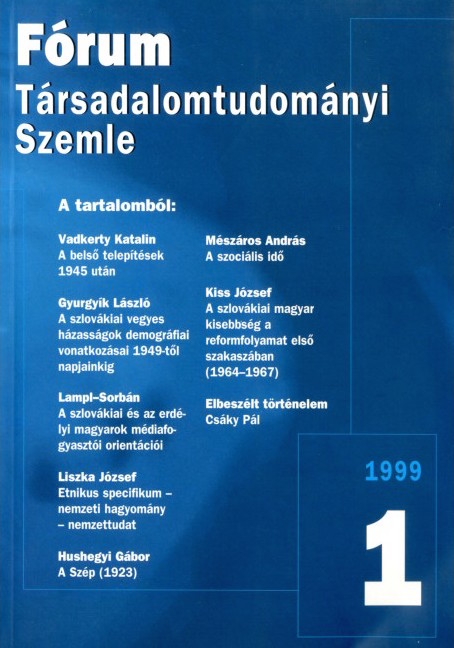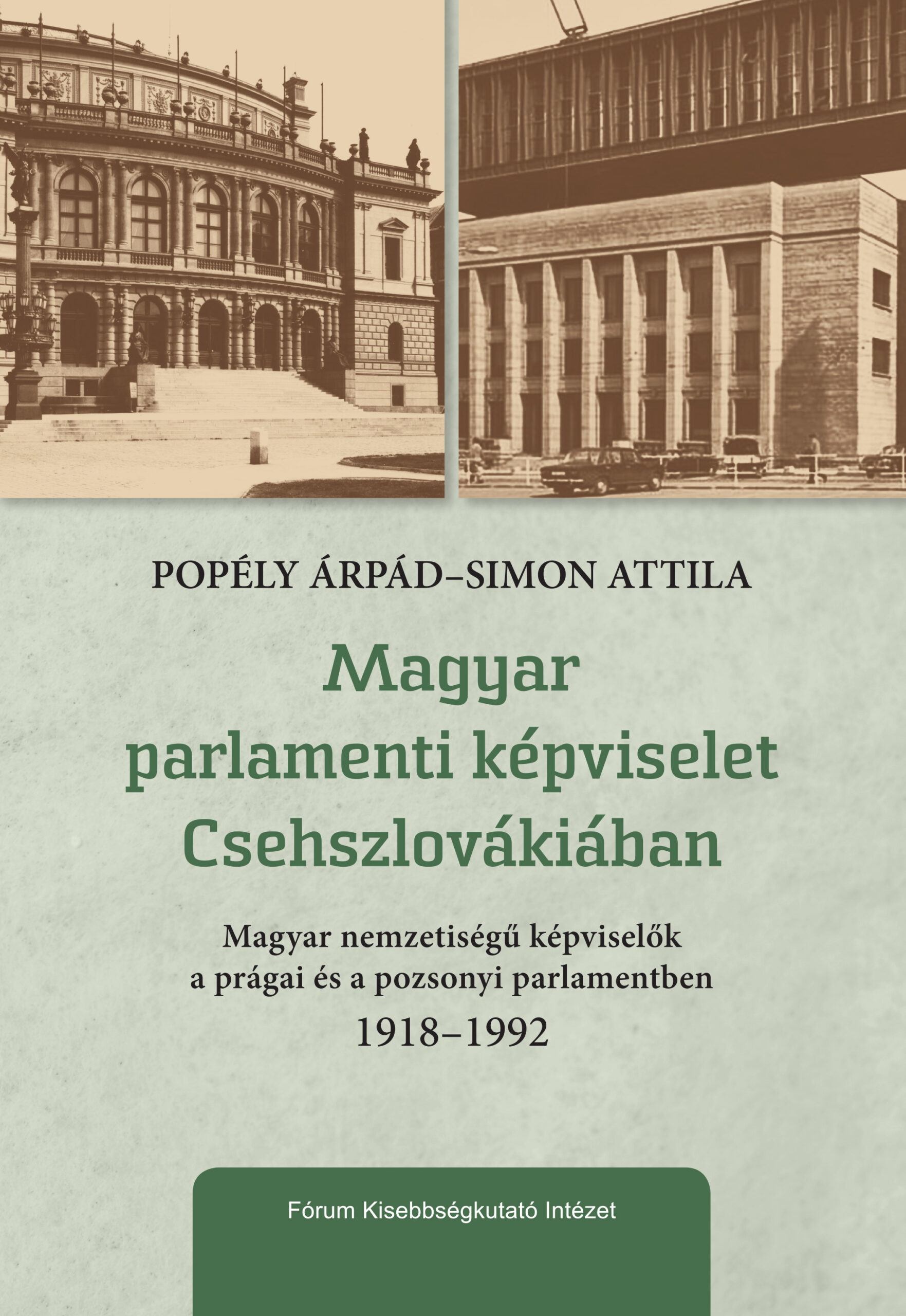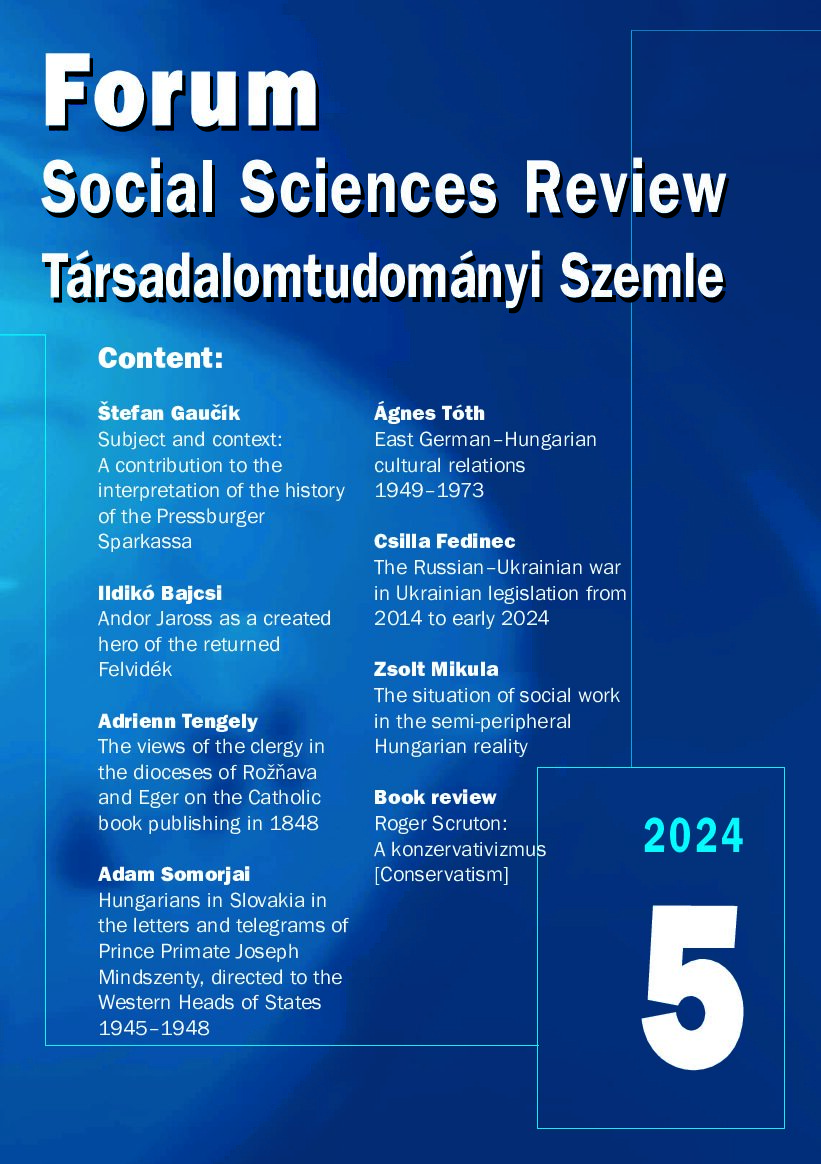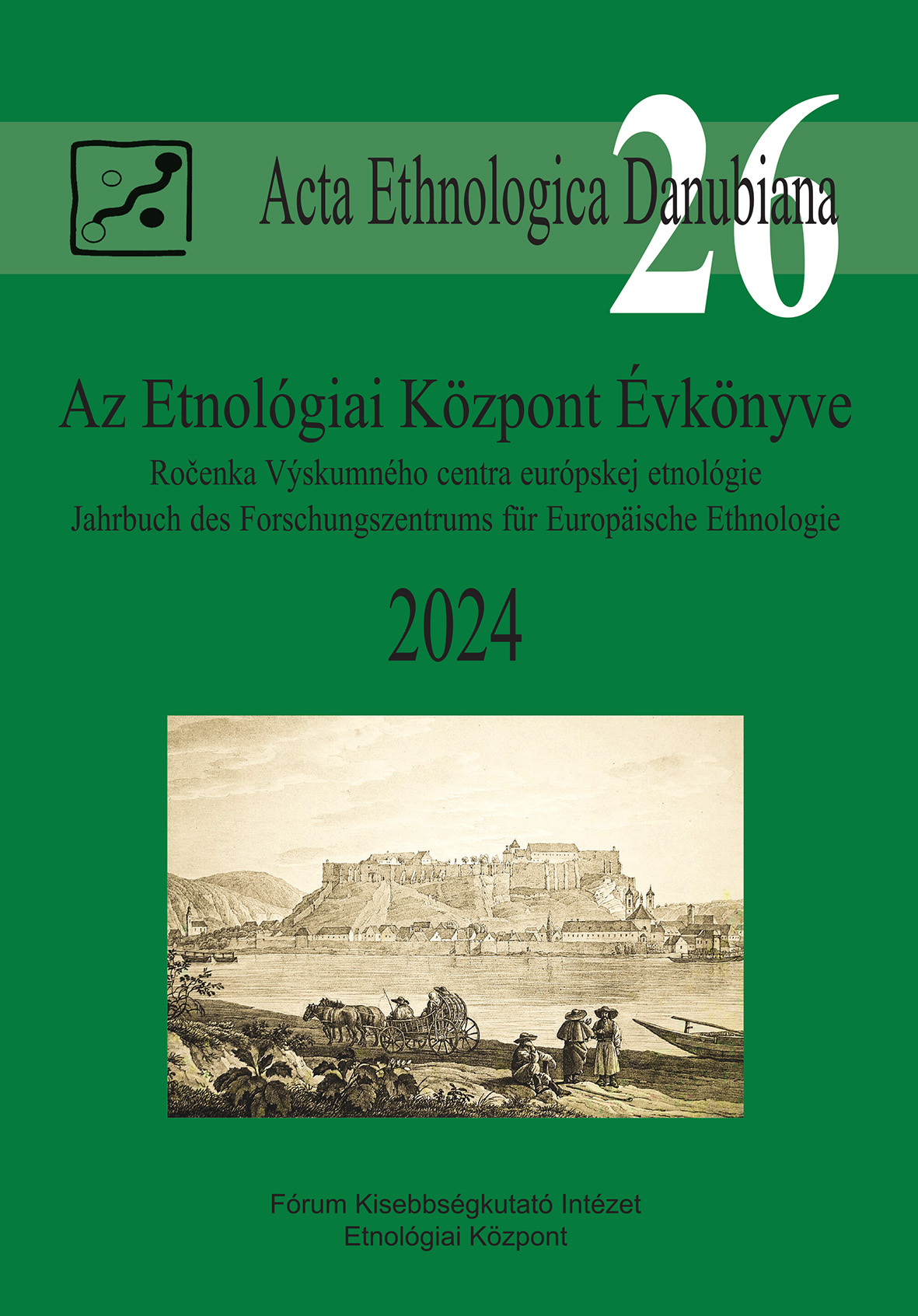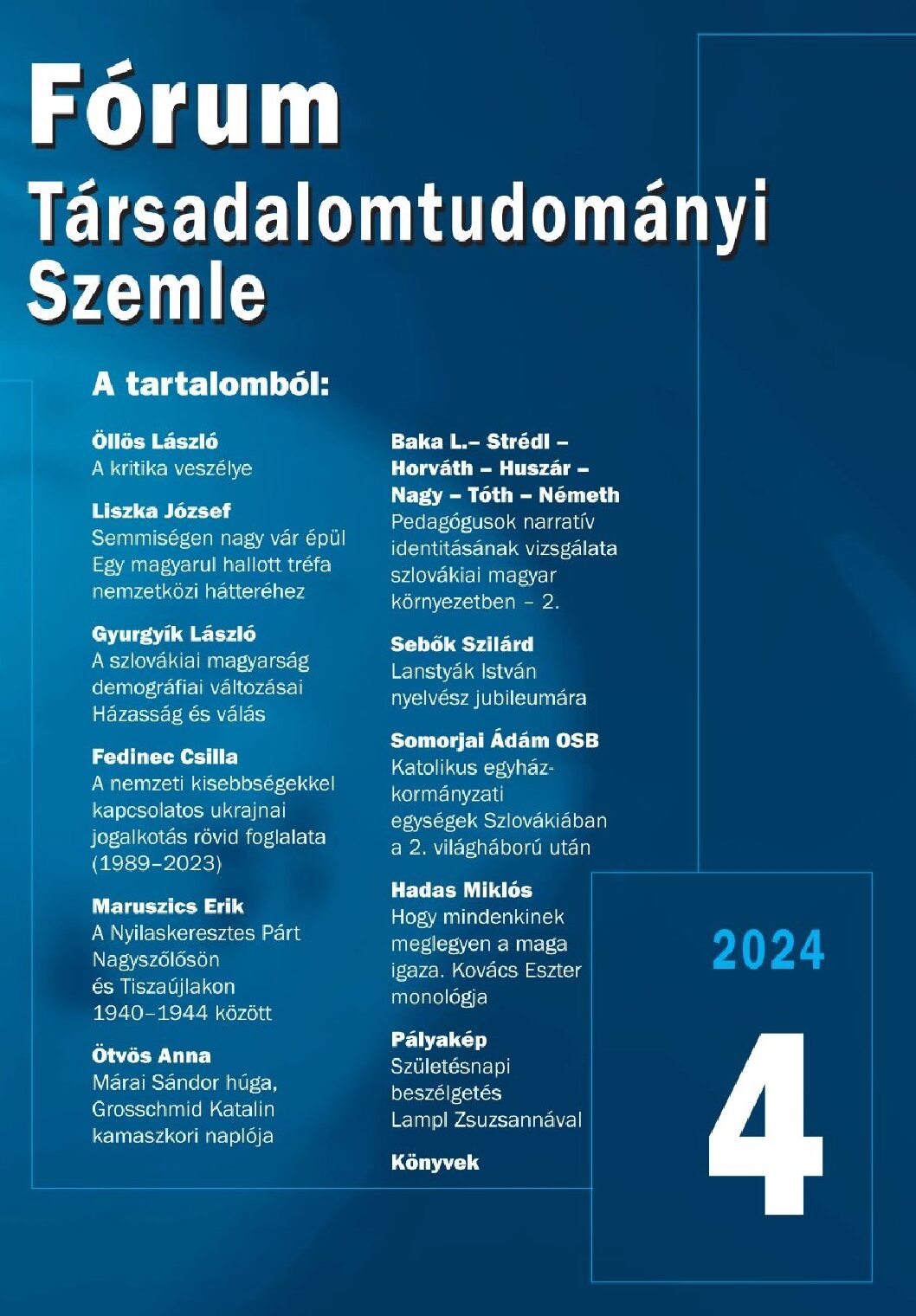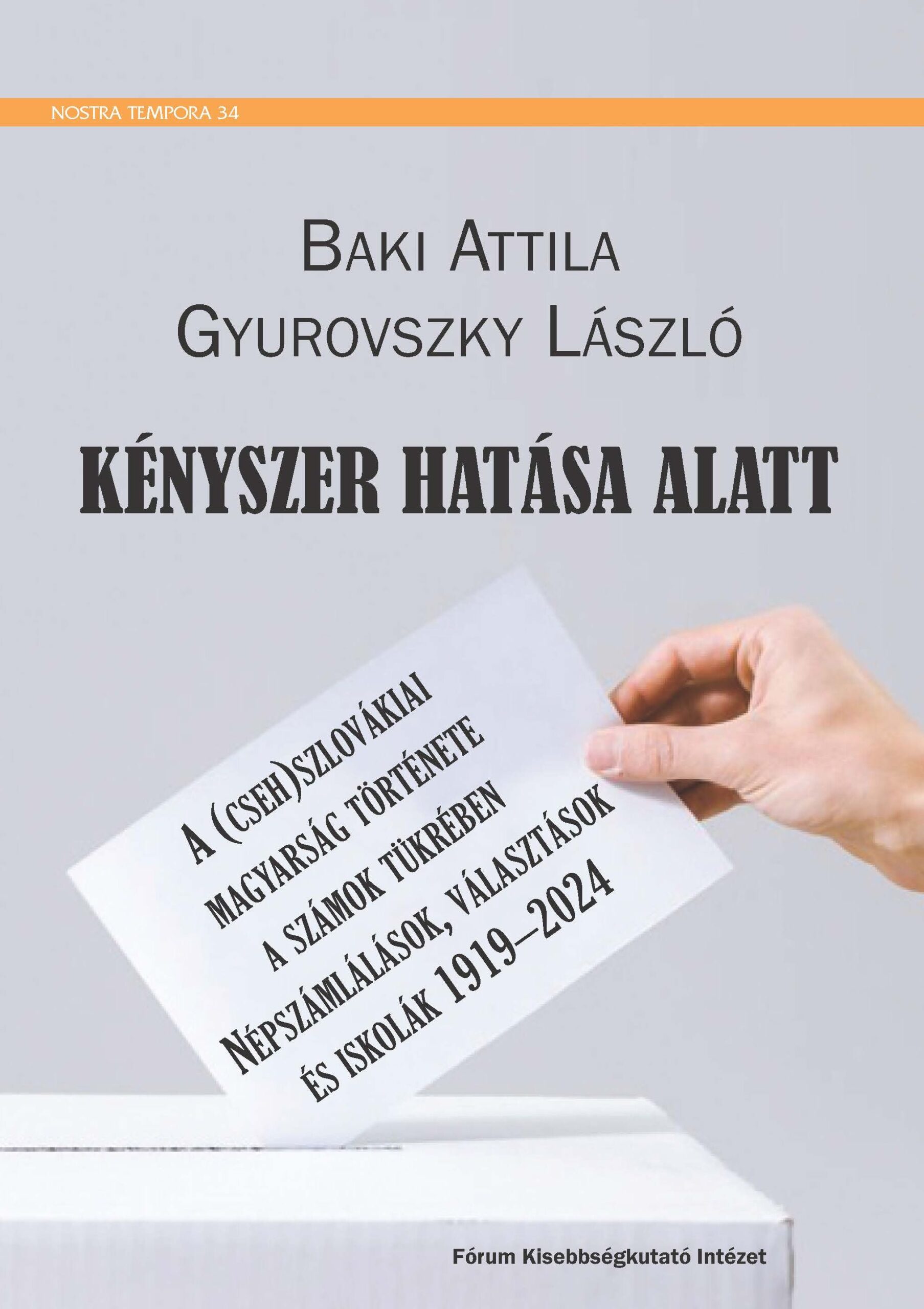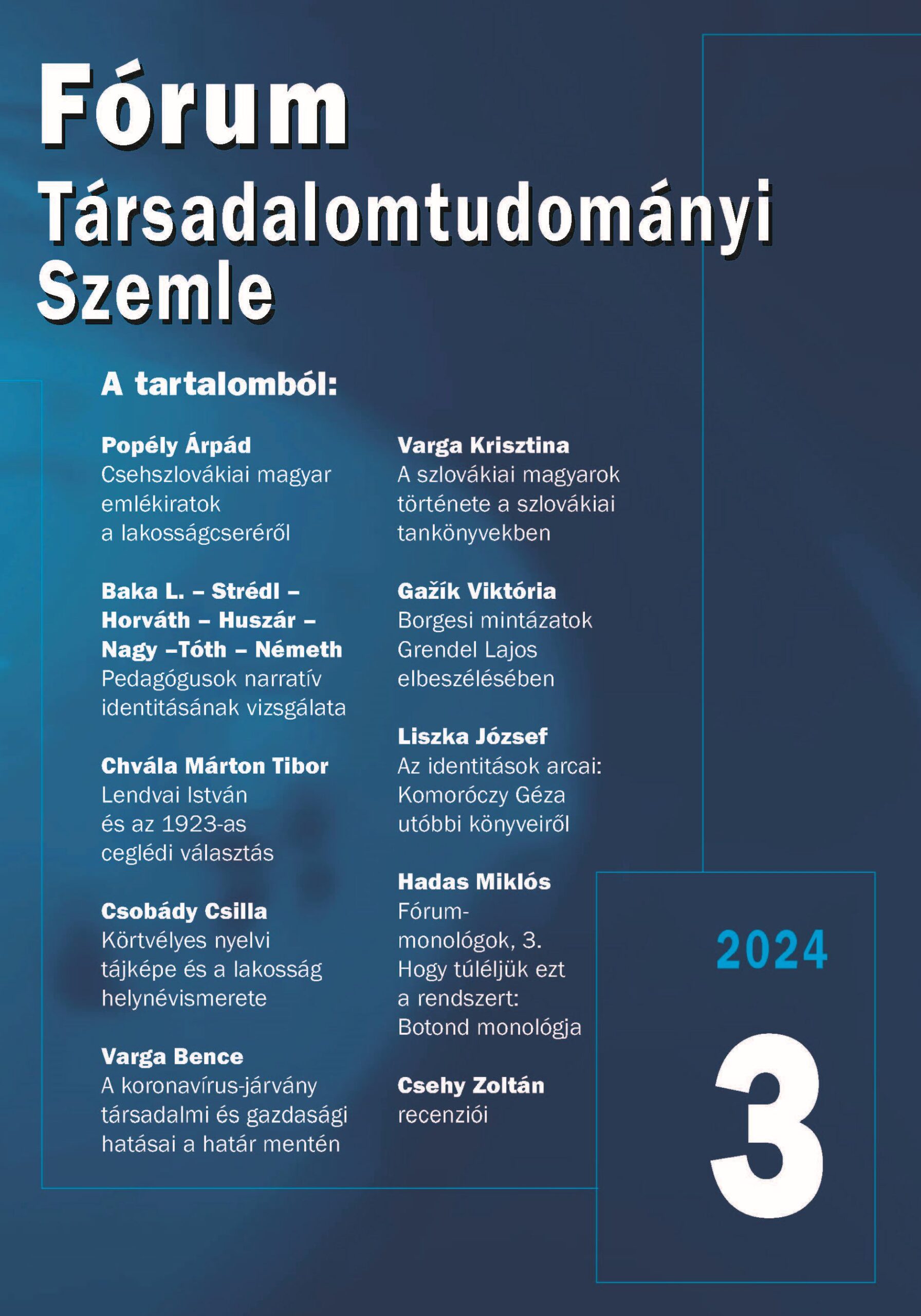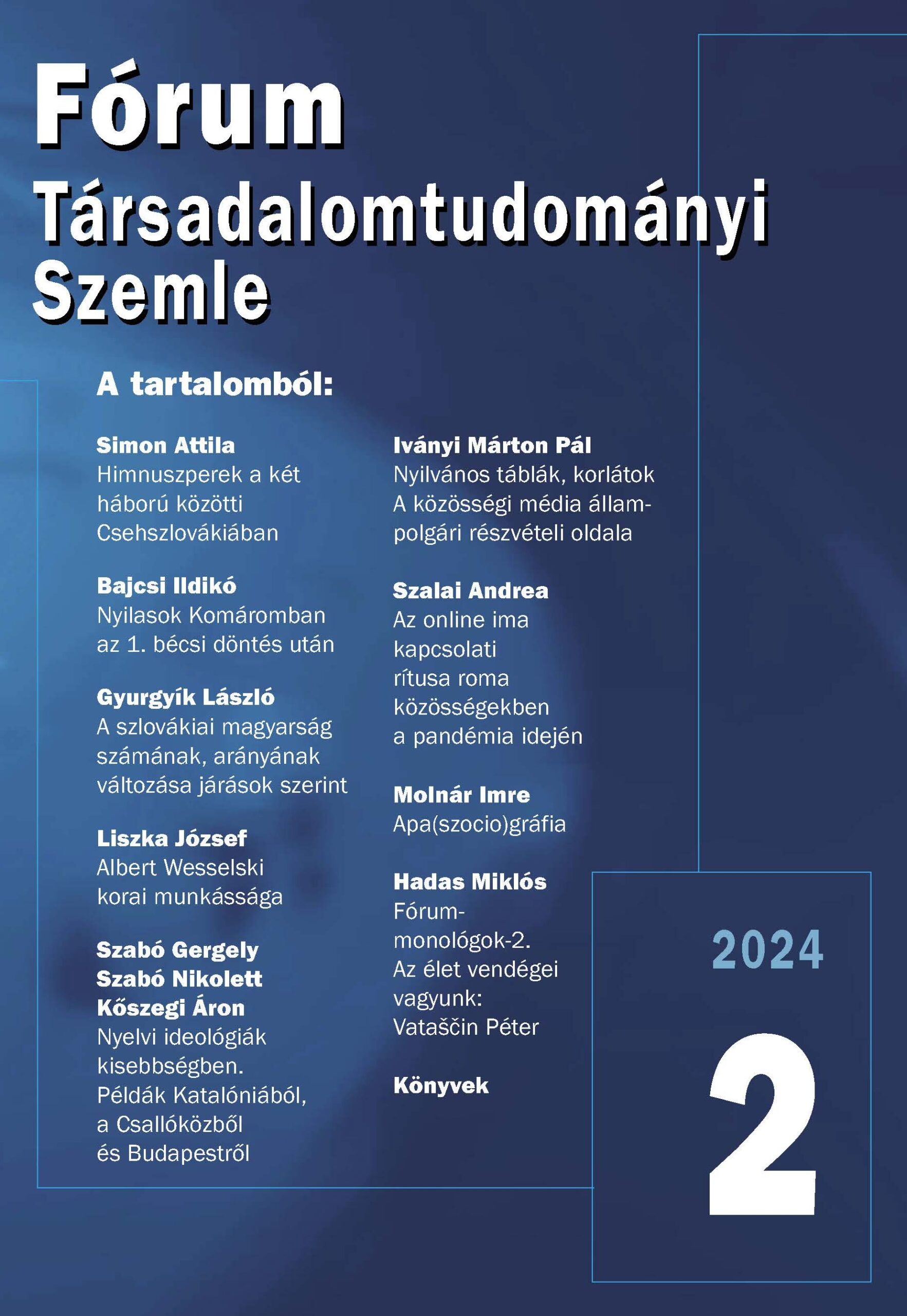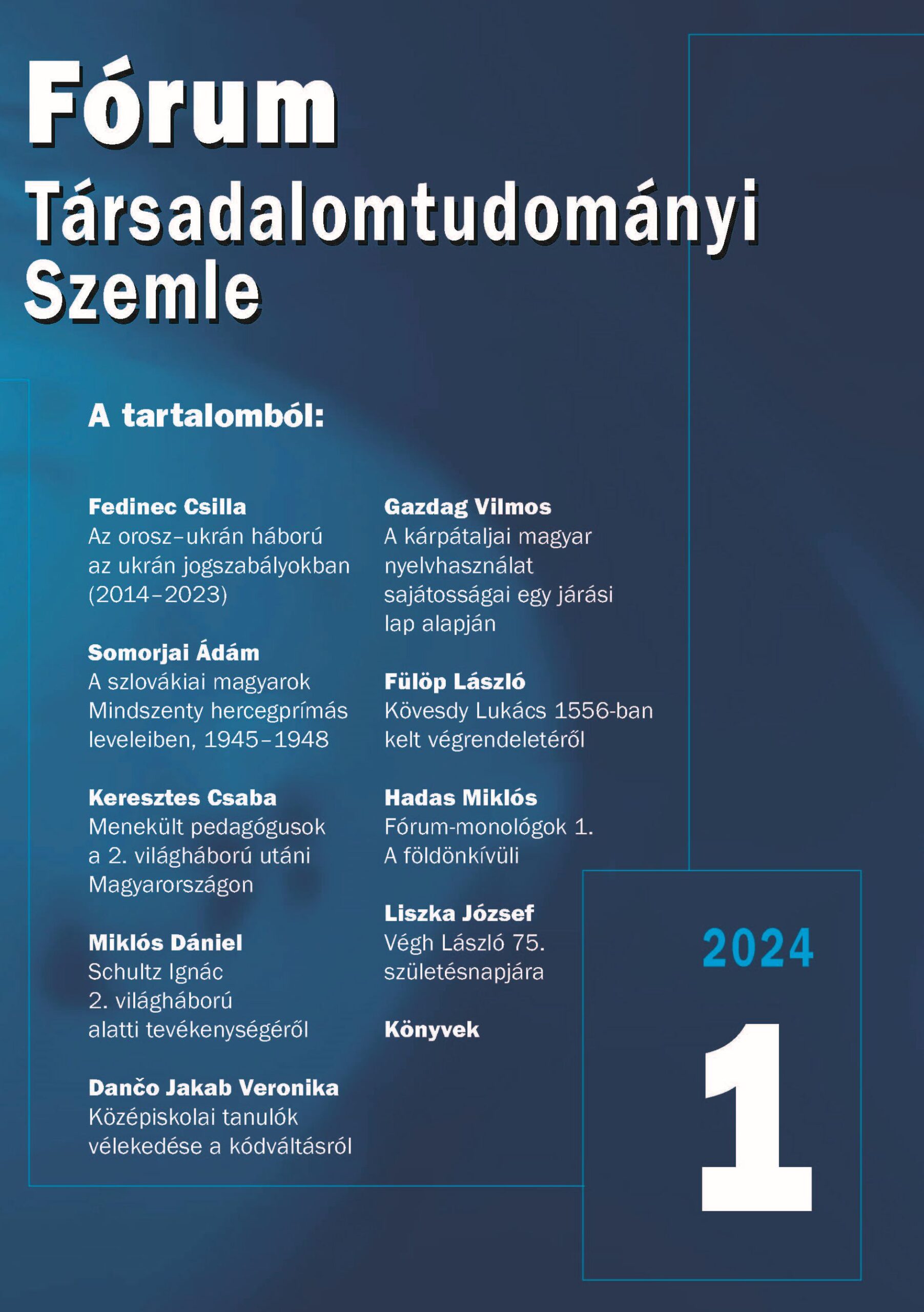Ferenc Vörös: Névkutatás és névföldrajz
One part of linguists still consider science of names to be an auxiliary science. Although the majority of scientist of science of names – as well as the study’s author – has different opinion on it. In the first part of the study the author introduces its creation and subject as a science with its own principles. The second part of the study takes into consideration the main contact points of name geography and name geography. The closing chapter of the study summarises that experience that should be taken into consideration according to the author at the planning of science of names research in Slovakia.
The current subject of science of names is the proper name itself. Although, here immediatly the definition of proper names causes problems. There is still a conflict in connection with what we consider proper nouns, in latin nomen proprium. Further obstacles of conception definition is that well-known fact that some languages differently judge certain categories. For example, in Hungarian language holidays and certain memorial days are not considered proper names. On the contrary, Russian does. In Slovak the names of people of different nations are considered as proper names. And we can even continue in it.
The definition of language geography is to be defined in a more narrow and wider sense. According to the wider interpretation includes connection on the level of language territories and the examination of language areas as well. According to the more narrow interpretation it deals only with the classification of dialects. Language geography research from the point of view of science history originate in dialectics. The initial researches have been changed to goal-oriented researches.
László Öllös: The Party of Hungarian Coalition after the Parliamentary Elections in 2006
At the parliamentary elections in 2006 the Party of Hungarian Coalition received 269 111 votes, with which it lagged behind the number of votes received four years ago. At the same time, 54,67% participation from four years ago, the number of votes of this year resulted the highest one up to now, that was 11,68% . The MKP in order to receive better voting results in the future, had to examine what were the social groups whose support it lost and why. After this it can be considered the way how to get them back. At the same time it should also be considered whom and why it remained in its supporters.
The MKP faces double challenge in the present situation in the issue of representation. On one hand the picture becomes weak that during the last eight years was created in the majority of voters, namely that it can effectively represent (manage) many concrete cases relating to them individually or as a member of a social group, since the party found itself in opposition. Only in such regional and local self-governments remains that opportunity in which the party representatives form the majority, and/or belong to the coalition majority. Although these positions do not enable to balance the lost governmental opportunities and sources.
In the issue of equal rights of the Hungarian and Slovak language the MKP has even several action fields. One is the political representation of language rights expansion containing even demonstrative elements. The second other is the political support of the social dispute on the issue. The third one is spreading Hungarian language usage in public life. Self-governments directed by the MKP can make a lot for this due to their competence, by influencing local enterpreneurs, and together with the national leadership of the party, any eventually by launching a movement that strenghtens and supports the public usage of the Hungarian language. In our opinion the support of cultural and educational institutions and mainly the emphasising its prestige and role from the point of view of MKP is very important, since in case of campaigns they have a very important role and can be a kind of background basis for the party present in government and mainly in the opposition. We are not talking only about Csemadok, but about civil organisations and educational institutions,
József Liszka: Between two Coasts … The Position and Role of the Folklore Culture in one of the Impact Zones of Europe
The study deals with three topics: firstly what is the Hungarian folklore culture in the Hungarian common knowledge; secondly how, due to what outer and inner influence, process did this culture evolved to such form that we got to know in the 20th century, and/or we thought we got to know, and thirdly what role does the Hungarian folklore culture play in European context.
Folklore culture is considered one of the most important institutions of national existance, and medium of ancient, national sings, and characteristics. At the same time science is aware of the fact that except for the language in the Hungarian folklore culture there is no such phenomenon that would be known in the whole Hungarian language field and only in the Hungarian language field. The other extreme is represented by those viewpoints that comprehend folklore culture as such sub-culture that builds from culture elements crumbled away from the “high culture”, and from this “waste” can show at most values of local and only partial importance, and that deal with ethnography as with “light opera”.
Well, in fact both viewpoints (the enthusiastically affirming and the rigidly rejecting) can be originated from the not knowing (or surface knowing) of the essence of folklore culture and taking no account of the results of ethnography. Folklore culture is a historical phenomenon, that from one hand means that it is forming and changing constantly, enrichening with new elements (forming them to its own picture), while others simply rejects. Overestimating or ignoring its role is not right.
We cannot understand the folklore culture and the ethnographic phenomena of a given nation without knowing the culture of neighbouring nations and comparing examination. Besides all this is one of the missions of European ethnology.
It can be explained from the point of view of scientific history, but it cannot be reasoned that our ethnographic experience (and in fact not just our) identifies spreading territory of „our folklore culture” with the Hungarian language territory (and in fact the „national” folklore culture with the language expansion of the given ethnical-national group). From one hand it is evident that the folklore culture of a particular ethnic group is generally not unified, it consists of more smaller and bigger basic units – that differ from each other – and at the same time connect to each other like mosaics. On the other hand certain cultural phenomena (we have to admit that the most!) strech over language borders, and depending on the etnic group, create cultures and culture circles that are connected to each other. Thus, in our case it would be better to talk for example about the folklore culture of the Carpathian basin, that has certain regional, small-country – but no or by all means ethnical (language!) – defined sub-groups (for example Pannon region, Upper Land, Low Land, etc.).
Zsuzsanna Lampl: Political Identity of Hungarians Living in Slovakia
The main topic of the study is the political identity of Hungarians living in Slovakia. In the first part the author shortly summarises what kind of identity types characterised the 90s, than in the second part of the study he analyses the state of political identity in 2001 and the changes comparing with the 90s. The author also analyses the characteristics of political identity types. In the third part, on the basis of the newest research, he introduces what factors influence interest towards politics and who are those who consciously refuse politics.
Éva Matus – Beáta Sebő – Annamária Végh_: The Documentary Activities of the Bibliotheca Hungarica
The main goal of the Bibliotheca Hungarica, that was established in 1990, is to collect and to reserve the memories, books, publications of Hungarians in Slovakia. Its mission is to provide an institutional framework for the collection of Hungarian issues relating Hungarians living in Slovakia, for its scientific process, and for the creation of a modern documentary service. The library consists of the following parts: collection of books and periodicals, post-cards, voice archive, inheritance, collection of letters and manuscripts.
Its collections of books and periodicals is more and more used by researchers, universtiy teachers and university teachers, and workers of institutions dealing with the issues of Hungarians living in Slovakia. Important goal of the Bibliotheca Hungaric is to publish bibliographies, this is why it launched a book series titled Miscellanea Bibliothecae Hungaricae.
Árpád Popély: Role of the Hungarian Committee in the creation of the Új Szó and the Csemadok
The study discusses the history of the Hungarian Committe at the Slovak communistic party leadership, and within this mainly the role of Új Szó party periodical and the Hungarian cultural organisation in the establishment of the Csemadok. The role of the committee set up in November 1948 was to help party leadership to re-integrate Hungarians living in Slovakia and that lost their rights into the political, social, and economic life of the country, to prepare and implement decisions of the party relating the Hungarian minority. Although the Hungarian members of the commmittee (Major István, Lőrincz Gyula, Fábry István, Kugler János, and Rabay Ferenc) were all old party workers who had the confidence of the party, the disclosed archive documents evidence that they opposed to the Slovak party leadership in many issues, and/or to the Slovak members of the committee (Daniel Okáli, Ondrej Pavlík, and Ladislav Novomeský), that after its less than one year of its existance, in October of 1949 led to the cancellation of the Hungarian Committee.
Gábor Lelkes: Regional disparities in Southern Slovakia in relation to the EU membership
The study deals with the development of the large scale regional disparities in Slovakia in relation to the country’s EU membership, focusing on Southern Slovakia, populated by the Hungarian minority. Before 2004 for almost 8 decades this region had been handled as peripheral by the successive governments of Czechoslovakia and Slovakia.
With the EU membership of the country, a new area-structure appeared, which shows the signs of a new economic and social area-structure and also a transformed regional settlement distribution. Slovakia’s entry to the European Union is a huge, perhaps one in a lifetime challenge and opportunity for the inhabitants of Southern Slovakia, which must be capitalized. However, we cannot expect, that the EU membership automatically means economic and social rise for the region. The EU membership provides only an opportunity to reduce the differences in the level of development of certain regions, an opportunity for a change of structure and an opportunity to catch up. The actual economic and social rise itself depends on the regions themselves, whether they live with the opportunity or not. Naturally if we want to end Southern Slovakia’s peripheral character, we need a favourable central governmental and regional governmental political atmosphere (the period between 2002 and 2006 is the best example for such central governmental level), since during the division of resources (EU or national) and developmental investments, the regions inhabited by Hungarians often fall victim to the Slovak nationalistic political decisions (regions and townships inhabited by Slovaks, which are already more developed, are the major beneficiaries).
Two years after Slovakia became a member of the EU, the indexes of underdevelopment and isolation in Southern Slovakia are still more unfavourable, then the similar indexes in other regions – however, there is a significant change in the processes influencing the tendencies. The regional discrepancies in Southern Slovakia are caused by the structure of the regions’ economy (sectors producing little added value are dominant), by the lack of good quality traffic infrastructure and highly educated human resources, and by the restrictive character of the Slovak-Hungarian relations. Therefore the policy of regional development has to approach the problem in it’s complexity in the following years, and the support must come in a concentrated form, and it must be structurally and regionally targeted. The financial background of the economical-social rise of the regions inhabited by Hungarians may be based on their own resources, on the budget of the townships, the regions and of the country, but most significantly on the resources of the EU. Drawing from these, however requires active systems of information and training/consulting for those involved in the regions. It is also necessary to tame the nationalistic feelings, which flared up on the Slovak and Hungarian side in the summer of 2006 and to restore the mutual trust between the majority nation and the Hungarian minority.
Attila Simon: With Pipe, Drum, Double Bass – or Experiment on „the Re-occupation of the Upper Land” on 5th October 1938
Due to the strained foreign and home policy situation in Czechoslovakia, September and October 1938 was rich in armed incidents, street demonstrations, ethnic conflicts. These were firstly characteristic for the Czech-German border section, where they began even sooner before the decision in Munich, but they continued even after the border changes.
Despite of this, on the Slovak-Hungarian border section there was silence and peacefulness, although in the first days of October, the situation in South Slovakia sharpened. In many places – mainly in the territory of Sub-Carpathia – there were minor border collissions that were made mostly by free groups gathering in Hungary. Although in the territory of the Slovak-Hungarian border section the number of such conflicts was minimal. On 5th October by Kacagópuszta belonging to the district of Feledi, on 7th October by Párkány, and on 13th October in Perbenyik belonging to the Királyhelmec distric there were border incidents. In this study from the three incidents we intend to introduce the one that happened in Kacagópuszta on 5th October that before the first Vienna decision can be considered not only the most important indicident, but also the most documented one.
The most important border incident of fall 1938 was in the Feledi district on 5th October, during which the units of the Hungarian border insuring company in Hangony broke to the territory of Czechoslovakia. Consequently they broke the first line of the Czechoslovak border guard and occupied some territories lived by Hungarians. Although the Czechoslovak border defence – that were activated and put into action even armoured troops – stopped them. After the attack was defeated, and their superior units more strongly insisted on their withdrawal, the attackers after 1 day of fight, on 5th October in evening hours drew back behind the state borders.
The settling down of the diplomatic storm that was caused by the evening incident took place at the meeting in Komárom. After the commencement of the plenary meeting on 10th October the leader of the Slovak delegation, Jozef Tiso required explanation from the Hungarian party concerning the attack on 5th October. Consequently Kánya explained that there was individual initiative behind the attack and that the examination of the case is in process. Teleki indicated that the soldier in custody would be bring to military justice.
Ilona L. Juhász: Research and Documentation of Cemeteries in Hungarian Territories in Slovakia
The author in her study summarises the results of cemetery research that have been made in territories lived by Hungarians in Slovakia, providing a profound overview of literature related to Hungarian and Slovak language topics. During the research of cemeteries and their tomb signs, in the past the professionals concentrated on the documentation of exclusively one type of tomb sign, that is on Protestant tomb signs carved from wood. Concerning the Catholic tomb signs, the dealt also with the “old” tomb sings, mainly those made from wood. A complex ethnographic research and complete documentation of a cemetery of a Slovak territory lived by Hungarians was the goal of the Ethnographic Center of the Forum Institute in Komárom for the first time. The first result of the research was a complex examination and complete documentation of such character of the cemetery of a mining territory in Gemer. The summary of this research was published in a publication in 2002. The author provides a thorough survey on the cemetery research provided in the mentioned institution, but it also introduces the positive results of other research made in other institutions in the last one or two years.
Péter Hunčík: Inter-ethnic training with psychodrama method
After ten years of work we can state, in retrospect, that the method of self-knowledge-communication-conflict resolution works well even in ethnically and religiously mixed groups. There is a detail description in the article about the using of the psychodrama in such training work.
During this period more than 1200 citizens of Slovak and Hungarian nationality participated in these trainings in Slovakia. Another 500 participants were Roma origin both from Slovakia and Hungary. In the article there is brief evaluation about our training activities in Israel, Belorus and Uzbegistan. The majority of participants in the training were local opinion leaders. Teachers and students comprised the majority of participants.
A year later most of the participants reported positive outcome as a result
of the training. We believe that this kind of training could have a domino effect and would contribute to reducing conflicts and potential conflicts between individuals, ethnic groups and nations.
Árpád Bagin: A New Ethnographic Phenomenon in East-Central Europe? The Halloween and the Preparation of Pumpkin Dummies at a Territory of the Lowlands in Ógyalla
The author, joining the research project of the Forum Institute – that provides research of minority – titled Popular Culture 1990–2005 delt with Halloween and mainly with the custom of pumpkin dummy preparation.
The author observed several influence at the examined territory: between institution-institution (visiting exhibitions), institution-family (for example a family influenced by a kindergarten program prepares a pumpkin dummy in its home), family-family (notice the exhibited works), there can be even influence of diferent intensity within the family. The pumpkin can be from own garden (there are some who grow pumpkins especially for this purpose), from grandparents’, relatives’, friends’, and neighbours’ garden. They illustrate, design different things, forms, even experience of many years can help in it. When preparing, they draw a pattern (with a knife, pencil, etc.) on the pumpkin. Pumpking preparation is a form of entertainment that can last for approx. half an hour, but even longer. The seed of the pumpkin can be used, eaten, at the institution they are glued on sheets of drawing paper. The pumpkin dummy can then be displayed (generally in case of institutions) for months (for example to January of the next year!).
In institutions (but also in households) several decorating elements can be used (hat, yarn, etc.), and it is also possible to paint on the pumpkin dummy. It is also present and mainly in the case of institutions that the size of the pumpkin is compared with the one from the previous year, it is then stated in which year grew bigger pumpkins. The eyes and the noses are generally of triangular form, but they also vary, the eye holes can be circular and square, too. In the insitutions pictures are made from the several stages of the process of hollowing out the pumpkinds. In the circles of the Slovaks even the expression of spook (but also jack-o-lantern) is present, Hungarians generally call the pumpkin dummy pumpkin lantern. But another names also appeared, that are in some families became settled, that are grinning pumpkin, dumb, etc.). Halloween can be called differently, respondents state (for example Halogene, Helovei). In 2003–2004 decorative pumpkins, and/or simple pumpkins appeared at the research areas (on stairs, entrence doors, but in the examined educational institutions, shops, exhibitions, too).
On 31st Oct. 2003 at a place of entertainment in Ógyalla a Halloween party was organised with more or less success. Here only the organisers were in costumes (witch, nun, etc.), who offered sweets from a basket to the guests.



